15 Best Under-Eye Patches, According to Editors and Dermatologists
Wake up your eyes with these powerful patches.
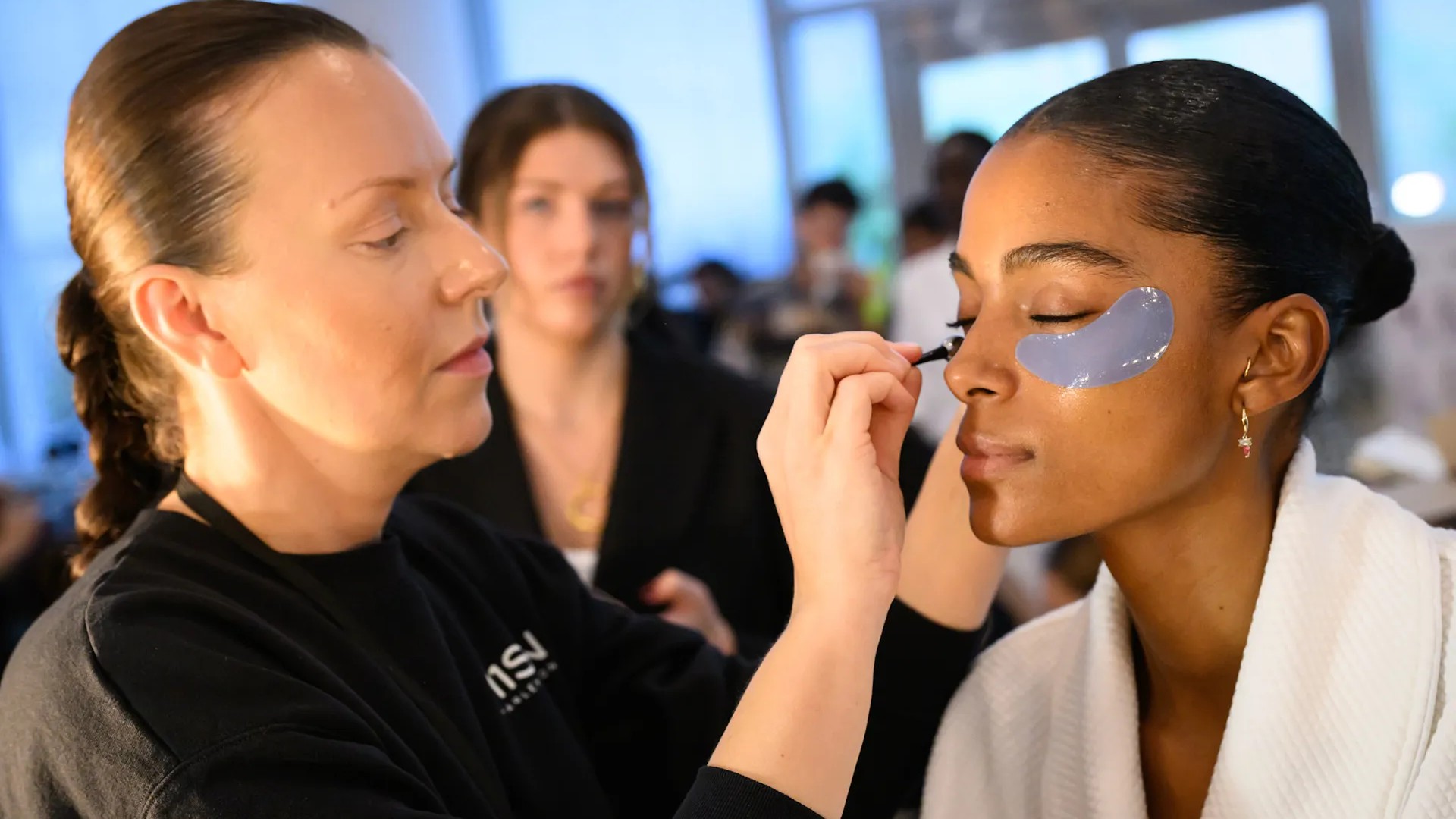

Ever reach for under-eye patches the same way you reach for a glass of wine at 5 p.m. on a Friday? I do—because just like your go-to glass of vino, there’s one of the best under-eye patches for every need and mood, whether it’s a luxe, heavy-hitting pair you use to soothe puffy eyes before a big night or a budget-friendly pack you stockpile for everyday moments.
But with thousands of options, finding the perfect under-eye patch for you can feel daunting. To help sort the hundres of options on the market, I've curated a guide to the best under-eye patches to tackle every concern, whether you’re dealing with dark circles, puffiness, fine lines, or just need a little brightening boost.
For expert intel, I also spoke with three board-certified dermatologists—Karan Lal, M.D., Kristina Collins, M.D., and Hadley King, M.D.—to break down exactly what under-eye patches can (and can’t) do and which ingredients are worth the hype. Spoiler: hyaluronic acid, caffeine, ceramides, vitamin C, retinol, niacinamide, and peptides are basically, your under-eye's ingredient dream team.
Ahead, discover the 15 best under-eye patches of 2025 that Marie Claire editors, dermatologists, and beauty lovers can’t stop raving about.
Best Under-Eye Patches of 2024
- Best Under-Eye Patches Overall: 111SKIN Cryo De-Puffing Eye Mask
- Best Hydrating Under-Eye Patches : Talika Eye Therapy Patch
- Best K-Beauty Under-Eye Patches: COSRX Advanced Snail Hydrogel Eye Patch
- Best Under Eye Patches with Caffeine: Peter Thomas Roth 24K Gold Pure Luxury Lift & Firm Hydra-Gel Eye Patches
- Best for Travel: Wander Beauty Baggage Claim Eye Masks
- Best Under-Eye Patches With Retinol: Babor Renewal Eye Zone Patches
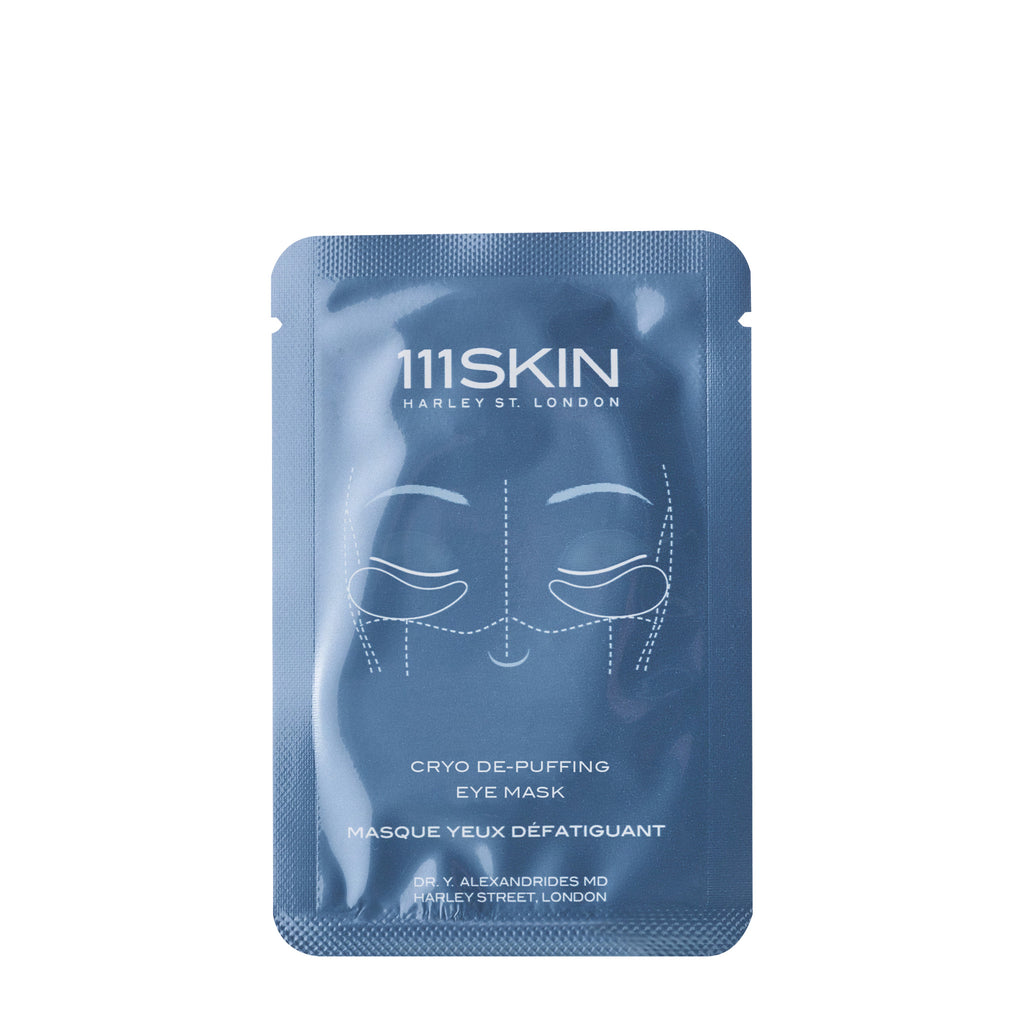
We love this eye mask for depuffing because it boasts the perfect temperature to soothe and hydrate swollen eyes and brighten dark circles. And trust us, when Marie Claire beauty editor Samantha Holender, who’s tested literally hundreds of eye patches in her day, calls this one of her favorites, you know they're worth it.
Key Ingredients: Seaweed extract (reduces inflammation), vitamin 3 (anti-aging), peptide complex (hydrating)
Pairs per pack: 8
Benefits: Hydrates, plumps fine lines and wrinkles, temporarily smooths fine lines and wrinkles, brightens, de-puffs
What We Love: Sensitive-skin-friendly; dermatologist-formulated
What We Don’t: Expensive
Review for MC: "To say I'm obsessed with these 111 Skin Cryo Eye Masks would be an understatement. I have a constant supply of the cooling patches tucked away in my fridge. The fragrance free formula doesn't irritate my sensitive skin or eyes (this is a huge concern for me), while the active ingredients like seaweed and vitamin E instantly depuff my eye area. I keep them on while I curl my hair and by the time I'm done, I look like I slept a full eight hours." — Samantha Holender, Beauty Editor
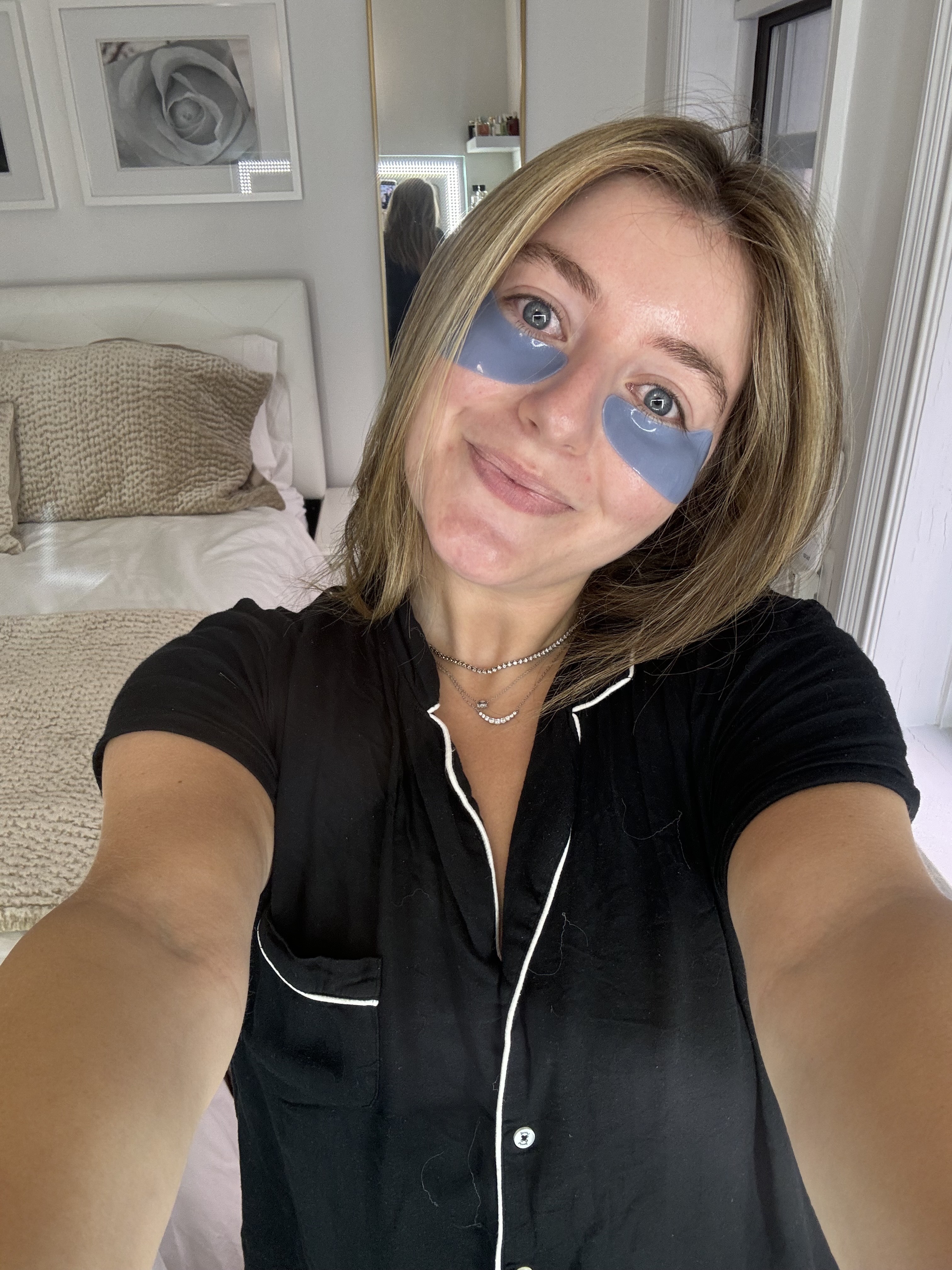
Samantha swears by the 111Skin Cryo Eye Masks for being both sensitive-skin friendly and impressively effective.
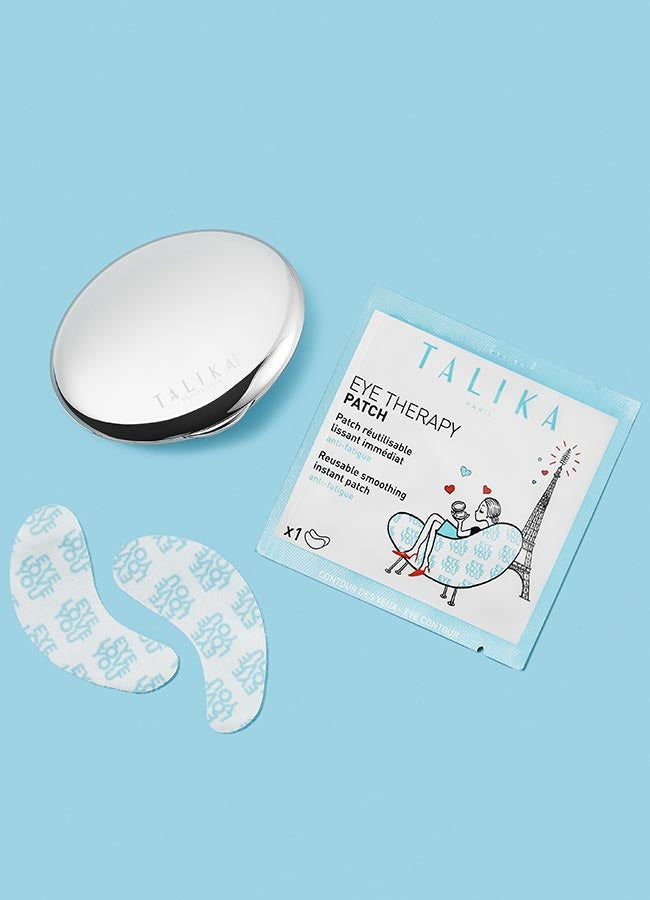
You can get your hands on these celeb-loved under-eye patches at a French pharmacy, but don’t worry if a Parisian getaway isn’t on the agenda (though it’s always a tempting thought). They're packed with emollients and ceramides (quick refresher: emollients prevent water loss, and ceramides lock in moisture) for a solid hydration boost. Just remember to store them in the silver case they come with to keep them from drying out and free from contaminants.
Key Ingredients: Shea butter, avocado oil, wheat germ oil, ceramides (hydrating)
Pairs per pack: 6
Benefits: Hydrates; plumps fine lines and wrinkles, strengthens skin barrier
What We Love: Fragrance and essential-oil free; reusable up to three times; comes with a chic silver case for convenient storage between uses
What We Don’t: Doesn't contain humectants to draw in moisture
Review for MC: “Call it on-the-nose, but these French-born patches are my go-to for flights to France. They’re a hydration savior for my under-eyes after a long flight and help me fake a well-rested look—no matter how impossible it is to sleep in my economy seat. I also love reaching for them during work-from-home days as a quick little self-care boost. They’re easy to use and not overly saturated, so there’s zero mess when you peel off the backing." — Marisa Petrarca, Contributing Beauty Writer
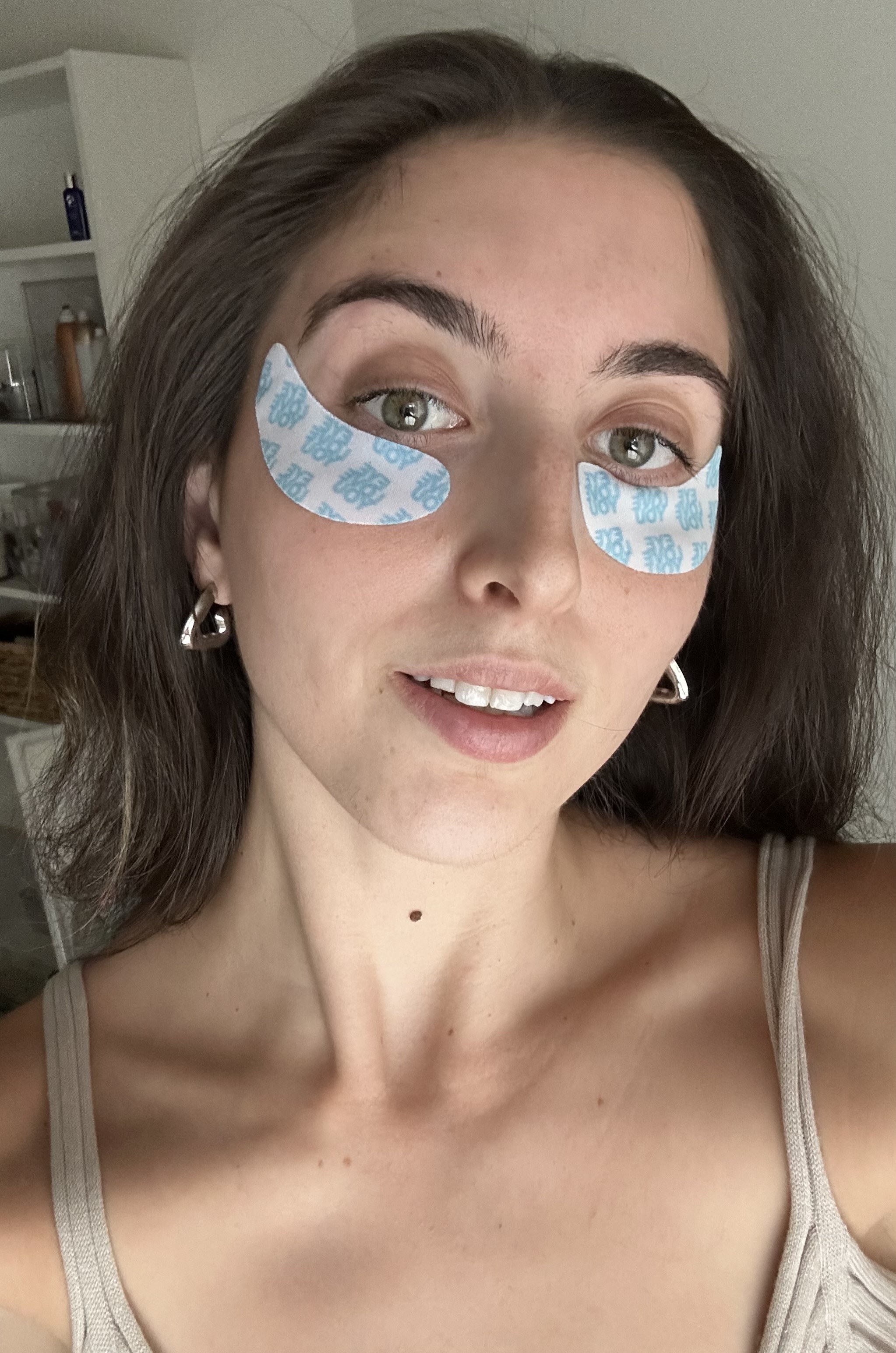
Marisa feels instantly Parisian-chic (and hydrated!) whenever she uses the reusable Talika Eye Therapy Patches.
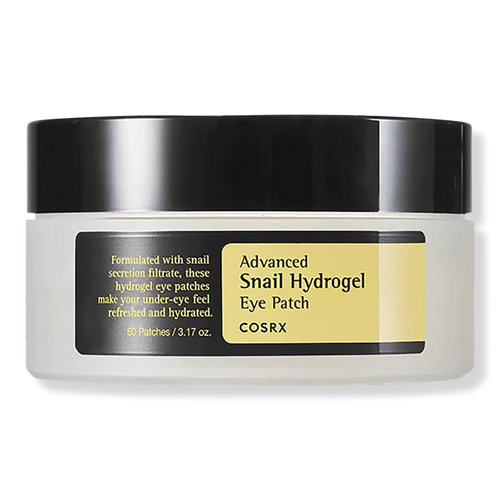
If you’re already familiar with COSRX (you probably are), it’s likely because of the brand’s viral snail mucin formulas, which are famous for their hydrating and skin-repairing magic on everything from dry patches to breakouts. So, no surprise here: This set of under-eye patches is drenched in it. But what sets them apart—besides the snail mucin—is that they come with a convenient mini tweezer to pluck out each patch, along with two sizes of patches: smaller ones for your eyelids or smile lines and larger ones for your under-eyes.
Key Ingredients: Snail mucin (hydrating and repairing), niacinamide (anti-acne, brightening, and firming ), allantoin (soothing)
Pairs per pack: 30
Benefits: Hydrates, plumps, brightens
What We Love: Comes with two sizes (one big, one small); contains a mini tweezer to pluck them out of the tub; ultra-hydrating
What We Don’t: Some noticed that since they're drenched in serum, they're prone to slipping down the face
Review for MC: “COSRX is the brand that introduced me to the power of snail mucin and the ingredient's a game-changer for my very dry skin. My obsession started with their Snail 96 Mucin Power Essence, but now I’m fully smitten with these under-eye patches. They’re my go-to whenever my skin feels especially dry and blah, usually during that tricky summer-to-fall or fall-to-winter transition when my skin’s desperate for moisture. I tend to keep them on the way longer than the suggested 20-30 minutes because, honestly, why cut the hydration party short when I can keep soaking up all the benefits?” — Marisa Petrarca, Contributing Beauty Editor
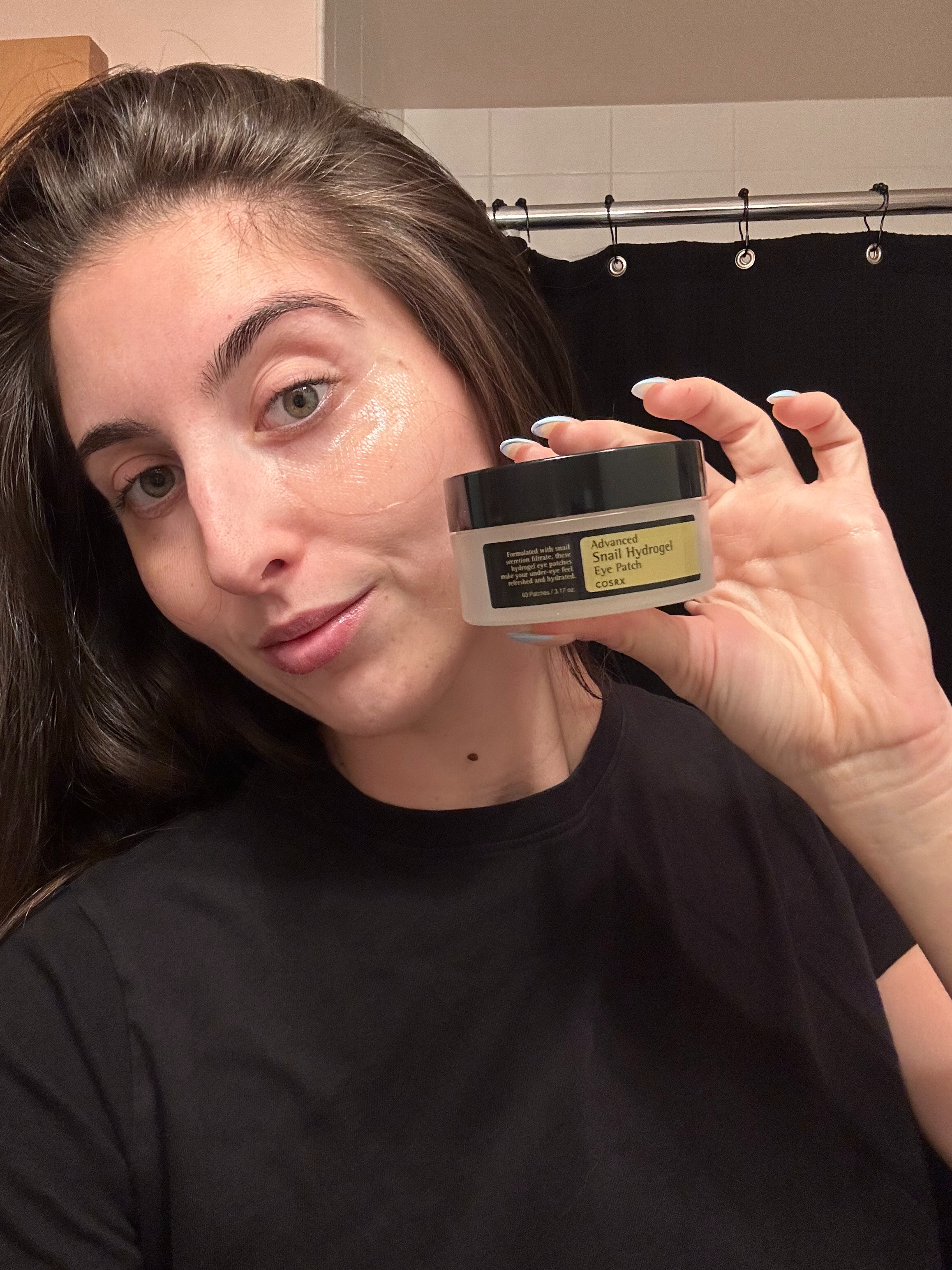
Marisa Petrarca loves the hydrating, serum-drenched formula of the COSRX under-eye patches.
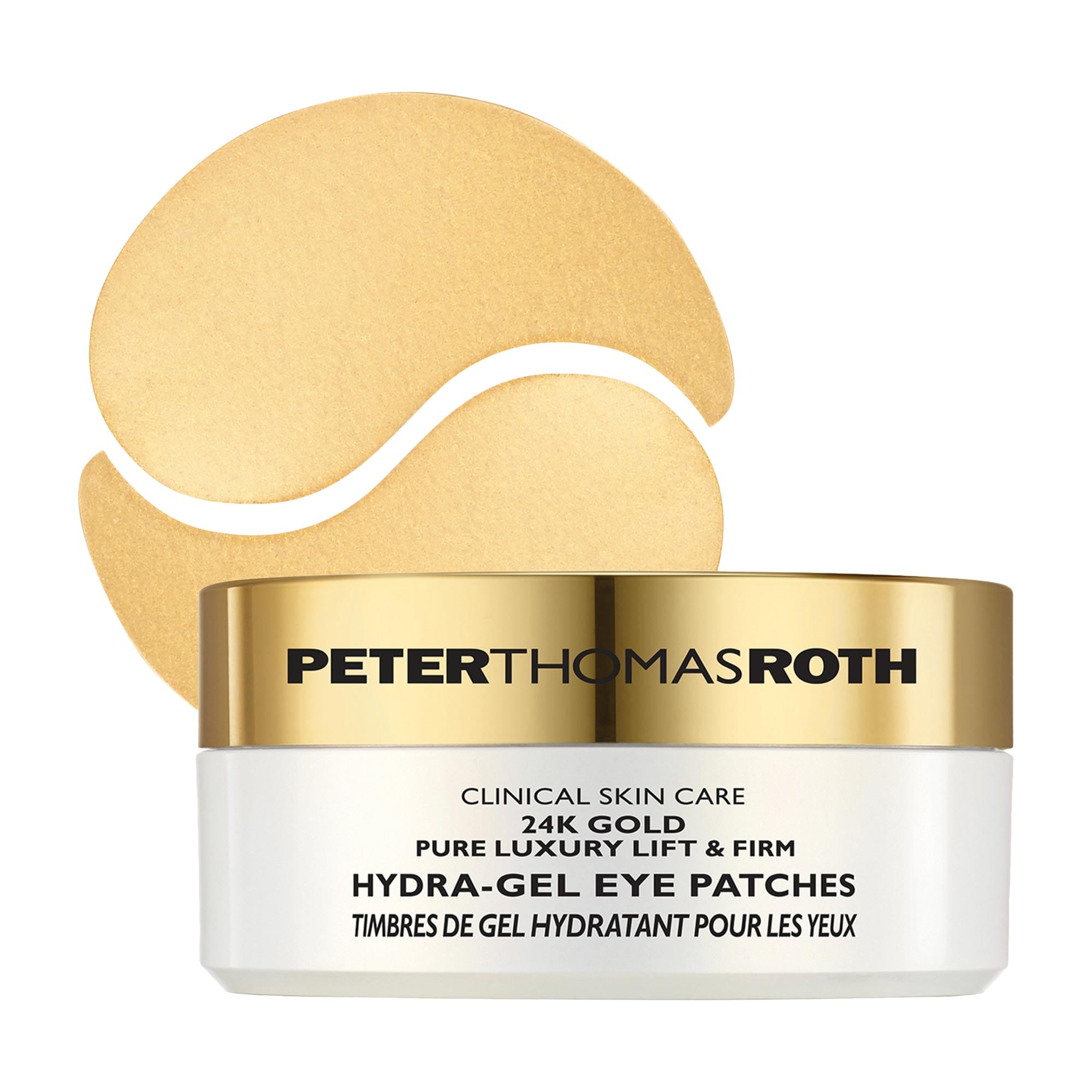
According to Dr. Collins and Dr. King, caffeine is your best friend for tackling under-eye puffiness, and it's one of the standout ingredients in this shimmery gold pair from Peter Thomas Roth. But that's just one ingredient that makes them a fan-favorite. They're also infused with hydrating hyaluronic acid and hydrolyzed collagen to help smooth out fine lines and wrinkles temporarily—and let’s not forget the 24K gold and colloidal gold. (How could we?) These two ingredients pack a punch with antioxidant protection and anti-inflammatory benefits, making them even more luxurious.
Key Ingredients: Caffeine (depuffing), hyaluronic acid and hydrolyzed collagen (hydration), 24K gold (antioxidant protection), colloidal gold (anti-inflammatory)
Pairs per pack: 30
Benefits: Hydrates, improves the appearance of dark circles and puffiness, plumps fine lines and wrinkles
What We Love: Feel luxurious; improve the appearance of dark circles and puffiness; great for using before makeup thanks to smoothing benefits
What We Don’t: Contains lavender essential oil, which may be irritating to some
Review for MC: “When I wake up with puffy under-eyes (blame it on a little too much wine or that late-night salty snack), these shimmering gold patches are my go-to after a morning shower and before makeup. They’re my secret weapon for looking like I’m living my best, healthiest life—even when I’m not. Plus, they leave my under-eyes feeling silky smooth, creating the perfect canvas for seamless makeup application.” — Marisa Petrarca, Contributing Beauty Writer
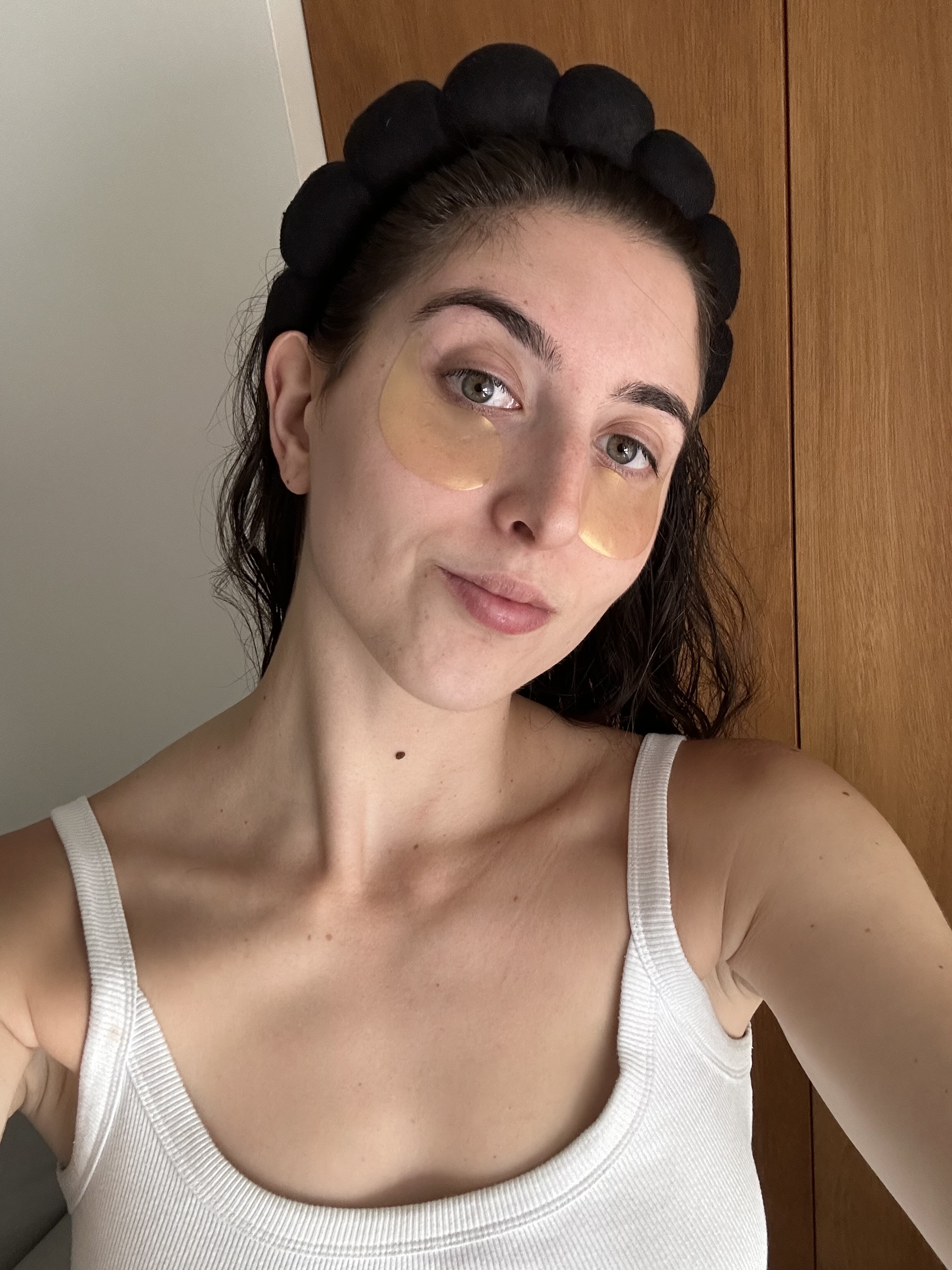
Marisa loves the depuffing benefits of Peter Thomas Roth's 24k Gold Pure Luxury Lift & Firm Hydra-Gel Eye Patches.
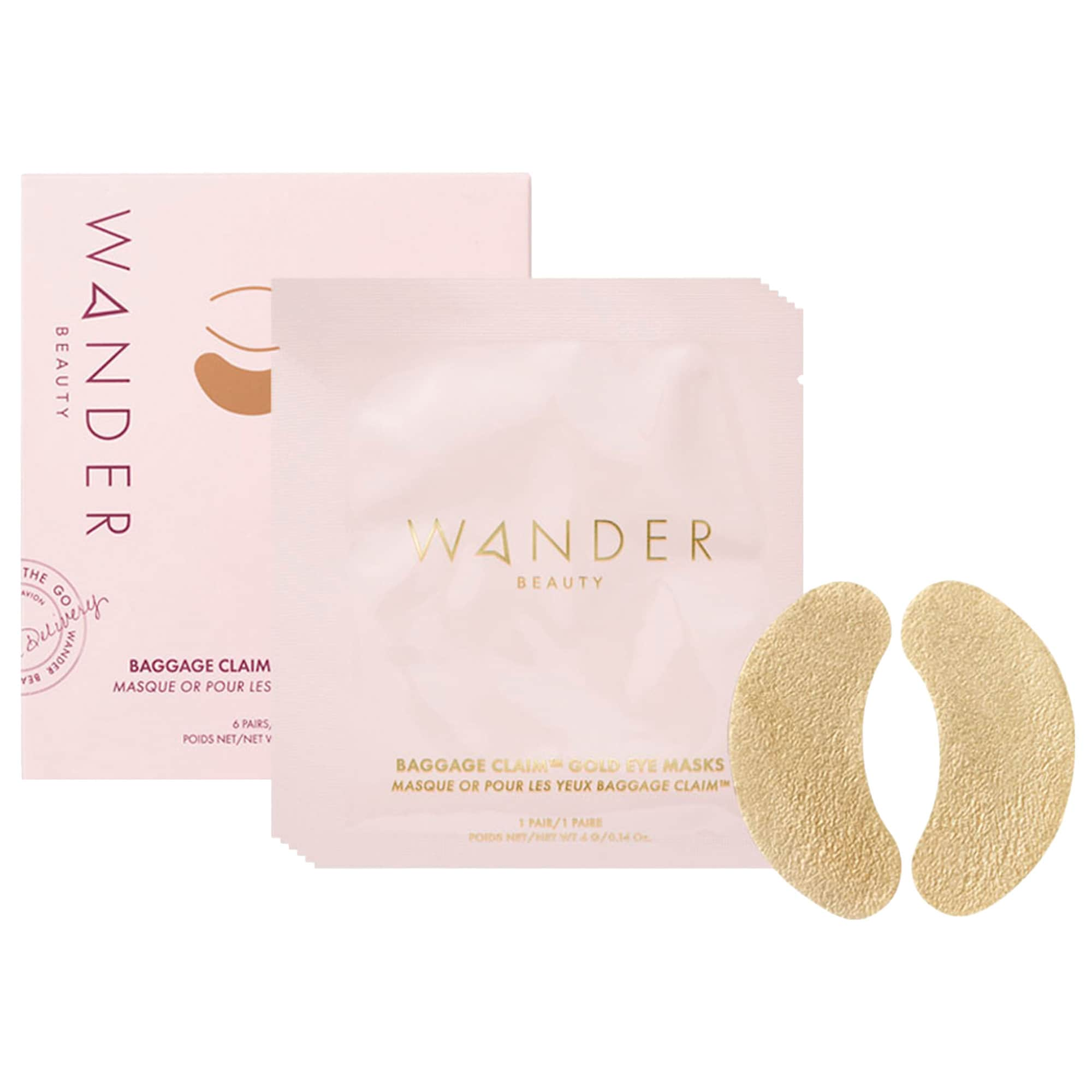
These gold foil masks don’t just make your skincare routine look glamorous—they’re also formulated with the essential ingredients to subtly plump fine lines and wrinkles while cooling your under eyes and soothing puffiness. If you’re after an affordable, immediate fix for under-eye issues that also lend themselves to some selfie-worthy moments, this Wander Beauty pair is probably your perfect match.
Key Ingredients: Hyaluronic acid (hydration), calendula extract (anti-inflammatory), aloe leaf extract (soothing and cooling)
Pairs per pack: 6
Benefits: Plumps, de-puffs, hydrates, brightens
What We Love: Instant results; most affordable under-eye patches on our list; individually packaged for travel
What We Don’t: Doesn't have advanced technology found in some other options on this list
Review for MC: “I always pack these single-use eye patches in my personal item when I travel, otherwise I know I'd regret it. After a long flight, when my skin and lips feel like they've been stripped of any and all moisture, I slap on these patches along with a hydrating lip mask. They quickly tackle puffiness and dryness and help me look and feel my best, even after really long travels.” — Marisa Petrarca, contributing beauty editor
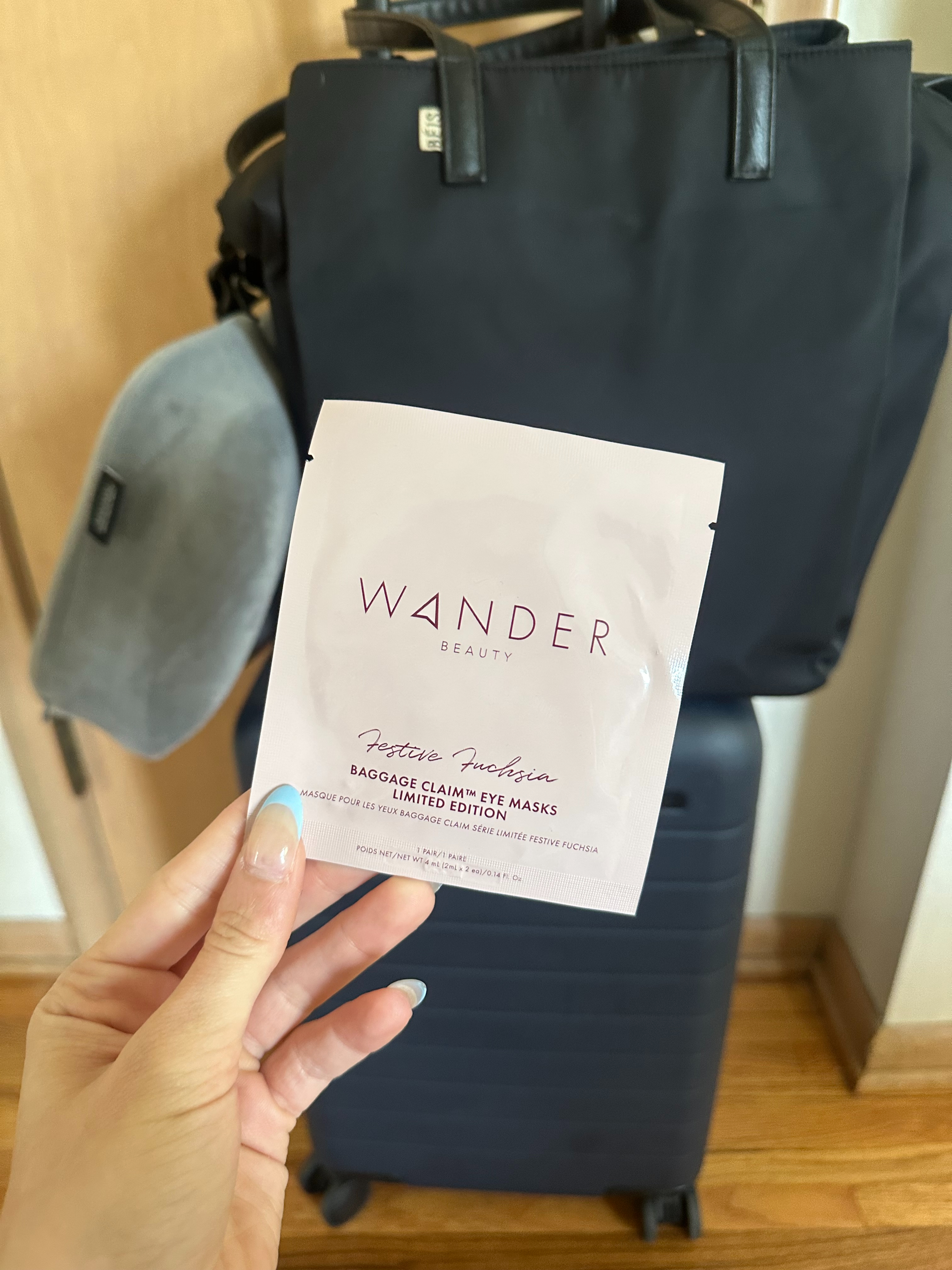
Marisa always travels with the Wander Beauty Baggage Claim Eye Masks.
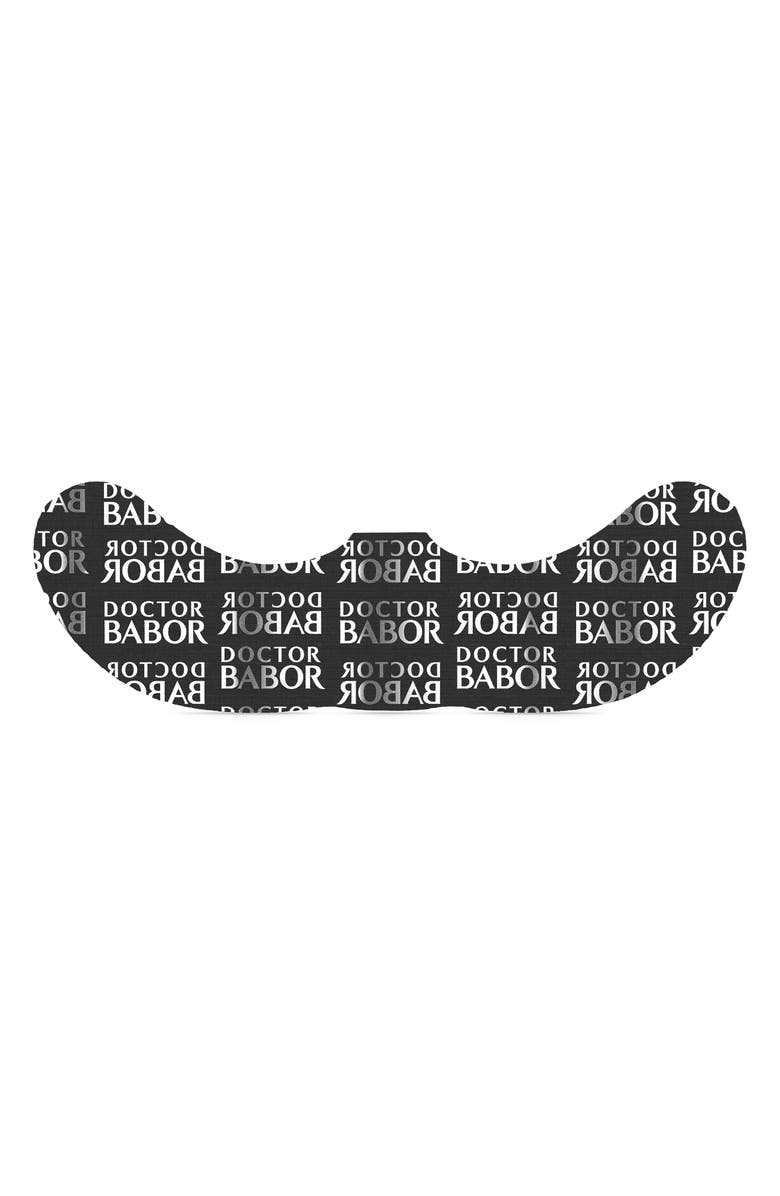
Unlike other under-eye patches and masks on this list, this one is a single mask that targets more than just your under-eyes—it clings to the lower eye area, upper cheeks, and bridge of the nose to tackle all the spots that tend to show signs of aging. It uses a trio of retinol: retinyl palmitate, encapsulated retinol, and bakuchiol. This is worth noting because, as Dr. Lal puts it, “retinol stimulates collagen production,” which means firmer, smoother, and more youthful under-eyes with consistent use.
The Doctor Babor Renewal Eye Zone Patches also contain niacinamide, the ultimate collagen and elastin booster for plump skin. For maximum impact, we recommend using this mask in the evening before bed to let your skin soak up all the benefits while you sleep.
Key Ingredients: Retinol (anti-aging), niacinamide (anti-acne, brightening, and firming)
Masks per pack: 5
Benefits: Exfoliates, brightens, firms, smooths
What We Love: Contains three types of retinoids; made into a single, easy-to-use mask, with visible results from just once-a-week use
What We Don’t: Should be noted that it's likely best used at nighttime before bed
Review for MC: "This summer, I had a lot of work travel in sunkissed cities filled with loads of adventure, tons of sun and not enough sleep. The result: my under-eye bags (my long-standing concern) got darker in color. As a big Babor fan, I was excited to see how their eye patches would live up to my intense travel schedule. And I’m happy to say, they did, they do — and I’m convinced — always will. Not only does it come with super lightweight eye serum, but the patches are reusable — a great option for long hauls (yes, I’ve worn them on the plane — they’re really cute!) and week-to-longer trips. But most importantly, they’re efficacious. After just 15 minutes, my under eye area appears less dark, and I look like I’ve slept my regular 9-12 hours a night.” — Natasha Marsh, Contributing Beauty Writer
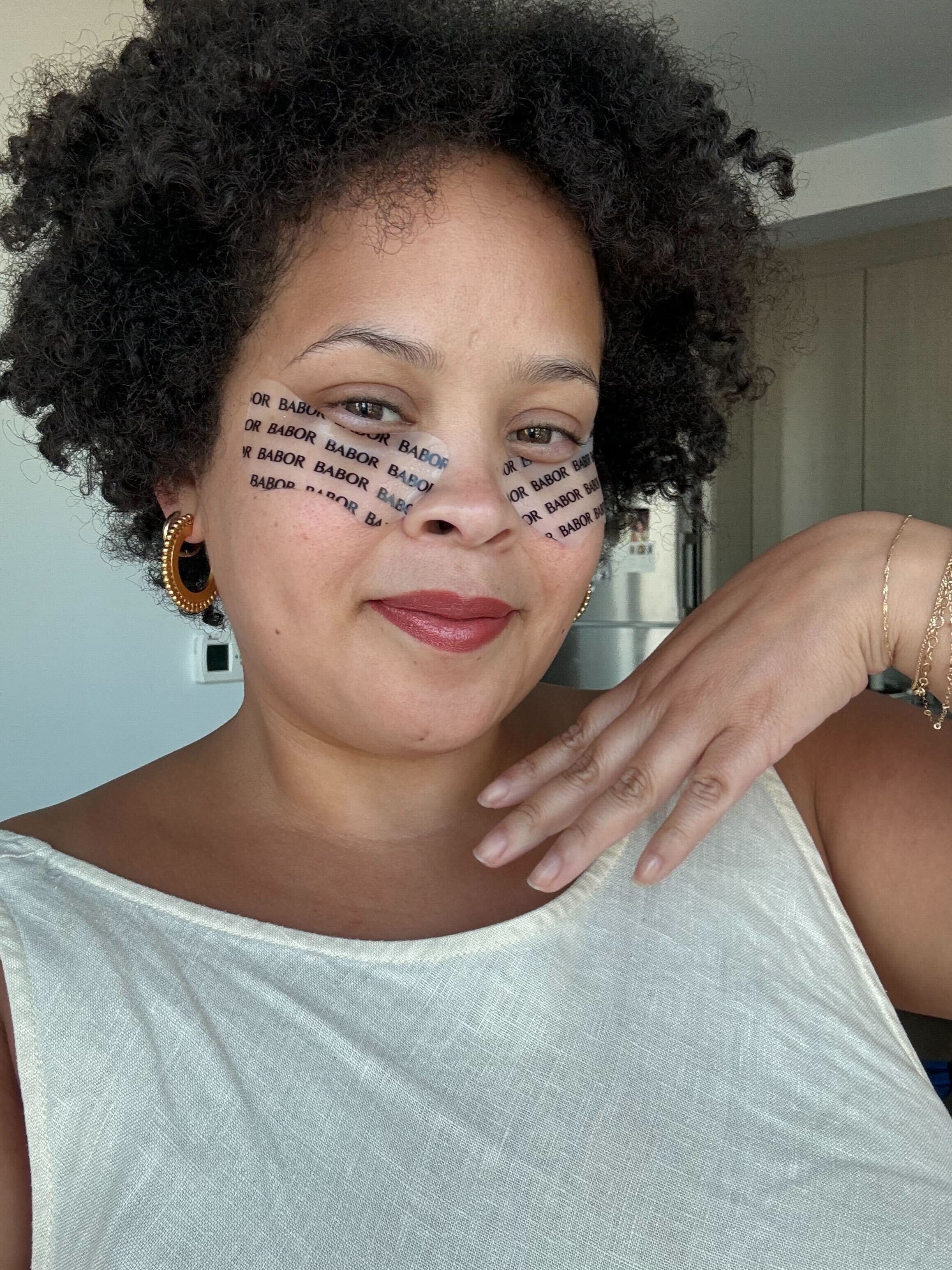
Natasha loves these patches when she's traveling.
Other Under-Eye Patches We Love
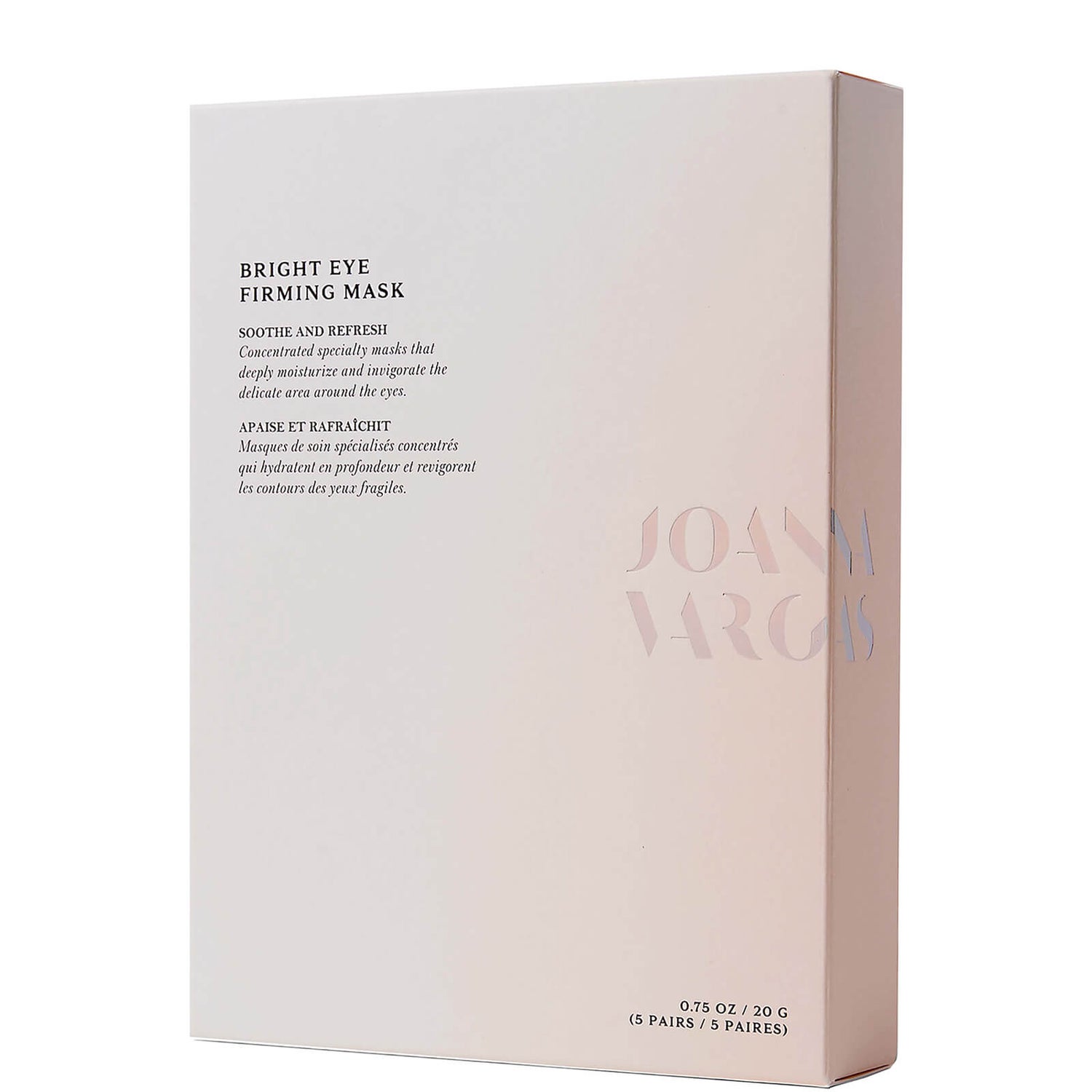
Running low on rest? You don't have to show it, thanks to these brightening patches from celebrity esthetician Joanna Vargas. Each individually packaged patch is infused with hydrating and plumping hyaluronic acid and allantoin to soothe dry, irritated skin, along with brightening tranexamic acid and acetyl hexapeptide-8, an ingredient that mimics the effects of Botox by preventing muscle contractions that cause dynamic wrinkles. In short, these patches have everything you need for a quick under-eye fix.
Key Ingredients: Hyaluronic acid and glycerin (hydration), panthenol and allantoin (soothing), tranexamic Acid (brightening), acetyl hexapeptide-8 (smoothing)
Pairs per pack: 5
Benefits: Plumps, hydrates, brightens, soothes, smooths
What We Love: Textured surface helps them securely stay in place; cooling; travel-friendly
What We Don’t: Contains essential oils, which may be irritating to some
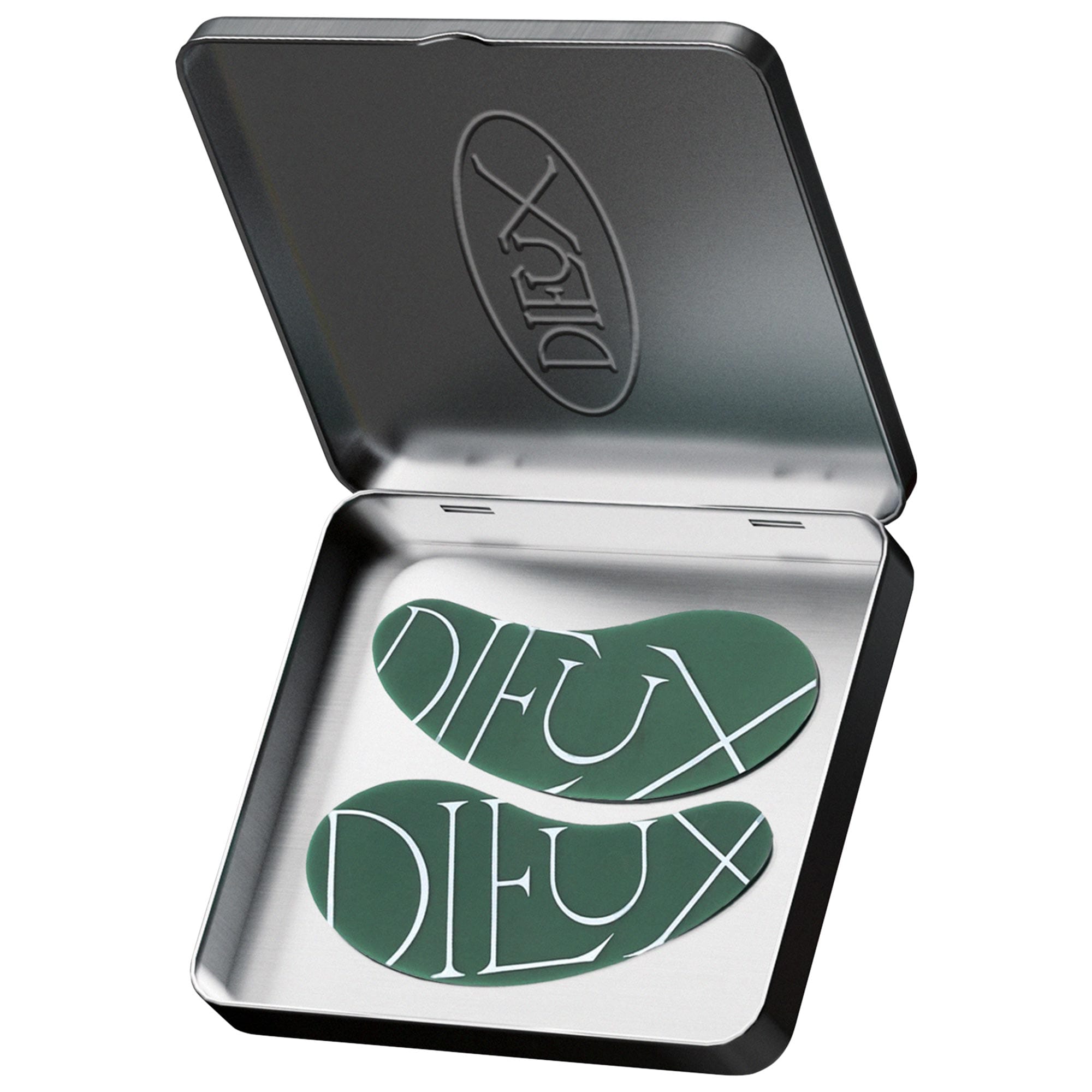
Dieux calls these under-eye patches “the last eye mask you’ll ever need" and they're hardly exaggerating. They're made from a reusable silicone strip that doesn’t use pre-infused skin-care actives. Instead, you get to customize the experience by applying your favorite eye cream or serum underneath, and the patch locks it in to maximize your results.
These patches are a must-have for those of you who prefer sticking to your tried-and-true under-eye products—whether that’s a hydrating eye cream or a depuffing serum—without having to decode a new under-eye patch's ingredient list. As a bonus, they come in a chic little tin for storage and easy portability, plus they’re selfie-worthy.
Key Ingredients: Medical-grade silicone
Pairs per pack: 1
Benefits: Reusable, improves product absorption (when used with an eye cream or serum); suitable for all skin types
What We Love: Cost-effective; eco-friendly, and customizable based on your skin's unique needs
What We Don’t: Logo may start to fade with daily use after a year
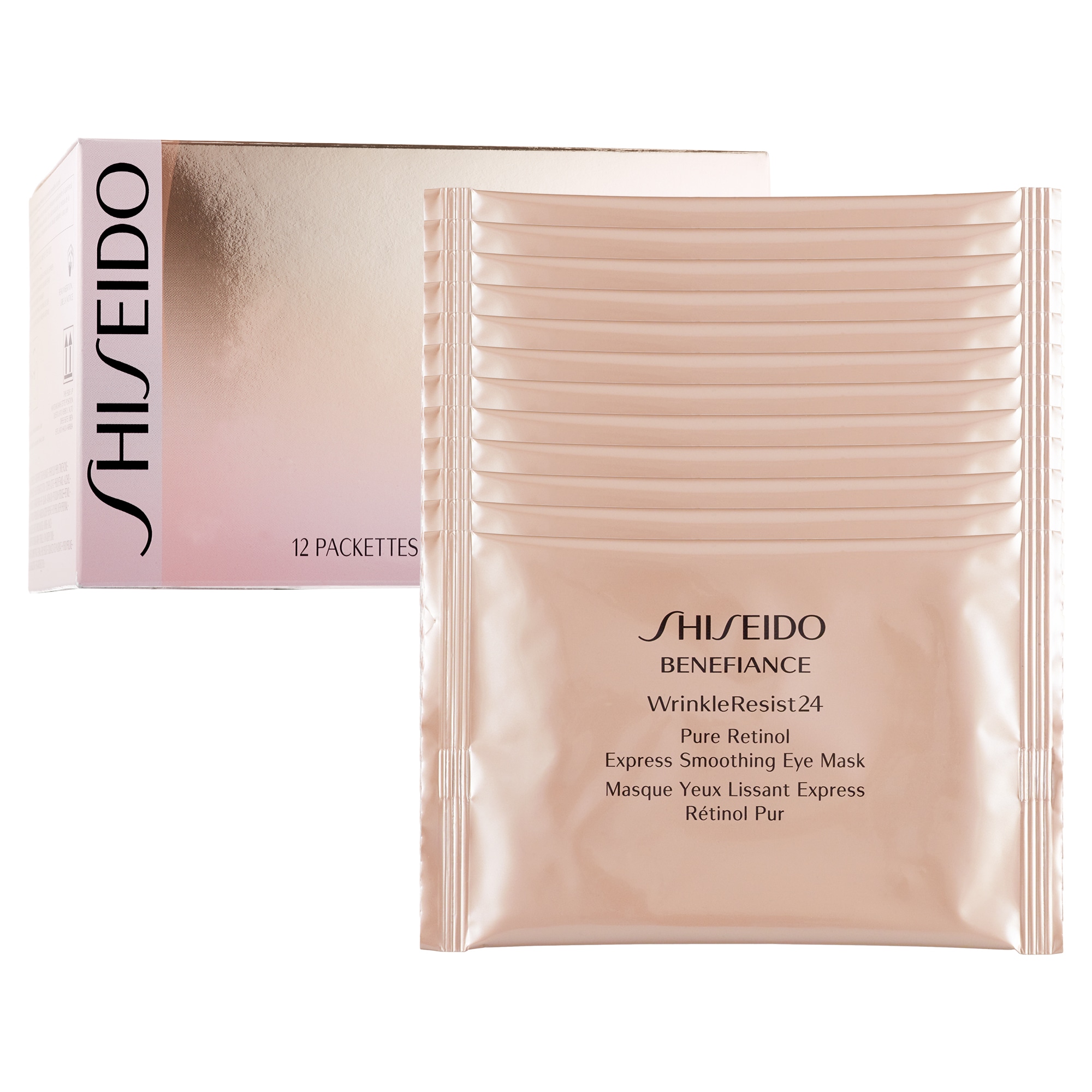
As board-certified dermatologist Dr. King explains, "Retinol and retinol alternatives like bakuchiol can help stimulate collagen production to help diminish fine lines." These under-eye patches deliver on that promise with pure retinol, which gives you long-term smoothing benefits with consistent use. (Pro tip: After 15 minutes, gently massage any leftover essence from the patches into your skin to maximize the results.) They also give you instant smoothing effects thanks to plumping hyaluronic acid.
Key Ingredients: Retinol (exfoliating), hyaluronic acid and glycerin (hydrating and plumping)
Pairs per pack: 12
Benefits: Plumps fine lines and wrinkles, hydrates, brightens
What We Love: Delivers both instant results and potential long-term benefits, creates a smooth canvas for makeup, also available in a three-pack for $20
What We Don’t: Contains added fragrance
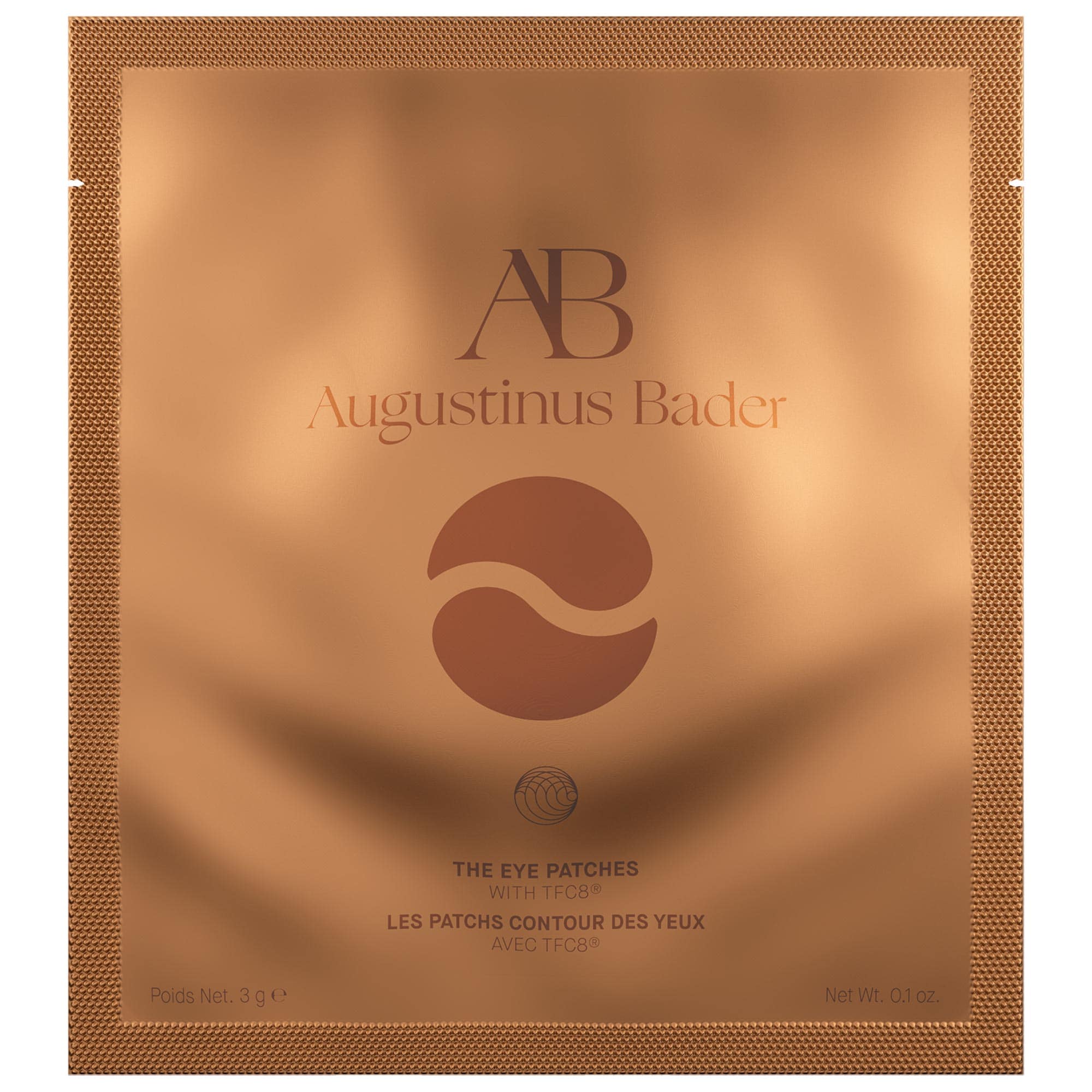
Hugh Jackman is among the many stars who swear by Augustinus Bader Eye Patches. What sets these apart from others on the market is that they use TFC8, a proprietary blend formulated by the renowned biomedical scientist himself. The famed blend combines amino acids, vitamins, and synthesized molecules to boost your skin’s natural healing and renewal processes. (FYI: It's the same powerful ingredient behind the brand's celebrated Rich Cream and the newly launched Victoria Beckham Beauty x Augustinus Bader Concealer Pen.)
The proof is in the results. A four-week clinical trial involving 60 participants aged 25 to 70 with self-perceived sensitive skin showed significant improvements in dark circles, puffiness, and fine lines. Plus, a separate trial demonstrated visible benefits from just a single use per its participants as well.
Key Ingredients: TFC8 (revitalizing), hydrating and plumping hyaluronic acid, niacinamide (anti-acne, brightening, and firming, allantoin (soothing)
Pairs per pack: 1
Benefits: Hydrates, improves the appearance of dark circles and puffiness, plumps fine lines and wrinkles
What We Love: Backed by clinical trials for proven benefits; contains the brand's famed TFC8, made from cooling hydrogel
What We Don’t: Sephora only carries a single-pack, not the six-pack—worth noting, even if it’s not a deal-breaker
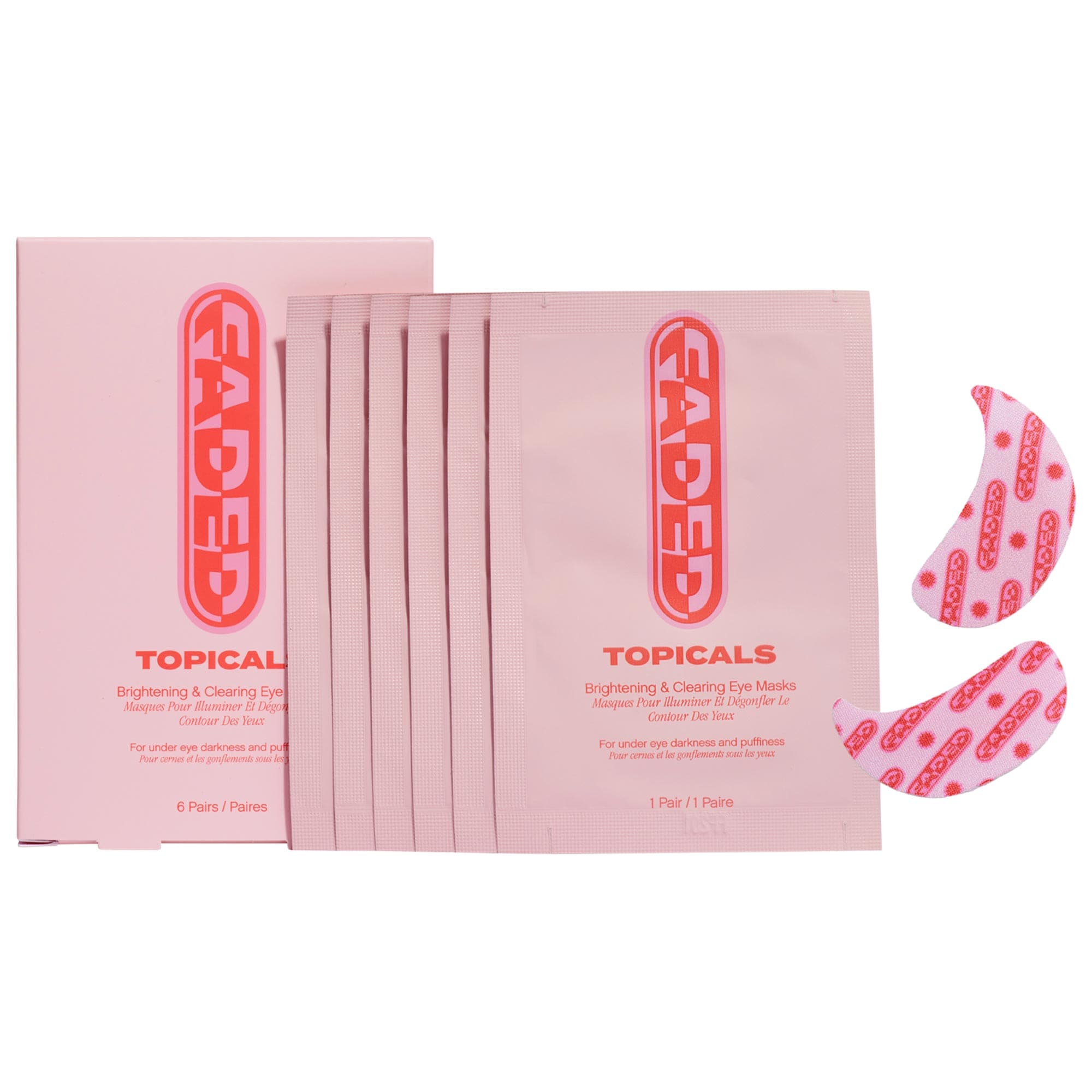
To brighten dull skin, Dr. King recommends eye patches with Vitamin C and antioxidants—which is exactly why this pair from Topicals made our list. They're loaded with skin-brightening ingredients like niacinamide, tranexamic acid, kojic acid, and alpha-arbutin, which work together to target multiple causes of dark circles—whether due to hyperpigmentation, inflammation, or thin skin showing visible blood vessels. These under-eye patches also do double duty against puffiness thanks to caffeine, which, Dr. Collins says has vasoconstrictive properties that help reduce blood vessel dilation, thus minimizing under-eye puffiness.
Key Ingredients: Glycerin (hydrating), niacinamide, tranexamic acid, kojic acid, and alpha-arbutin (brightening), caffeine (de-puffing)
Pairs per pack: 6
Benefits: Hydrates, plumps fine lines and wrinkles, de-puffs, reduces the appearance of dark circles
What We Love: Targets dark circles and discoloration; Black-owned; contains caffeine to reduce puffiness
What We Don’t: Some users found the patches a bit too dry for their liking
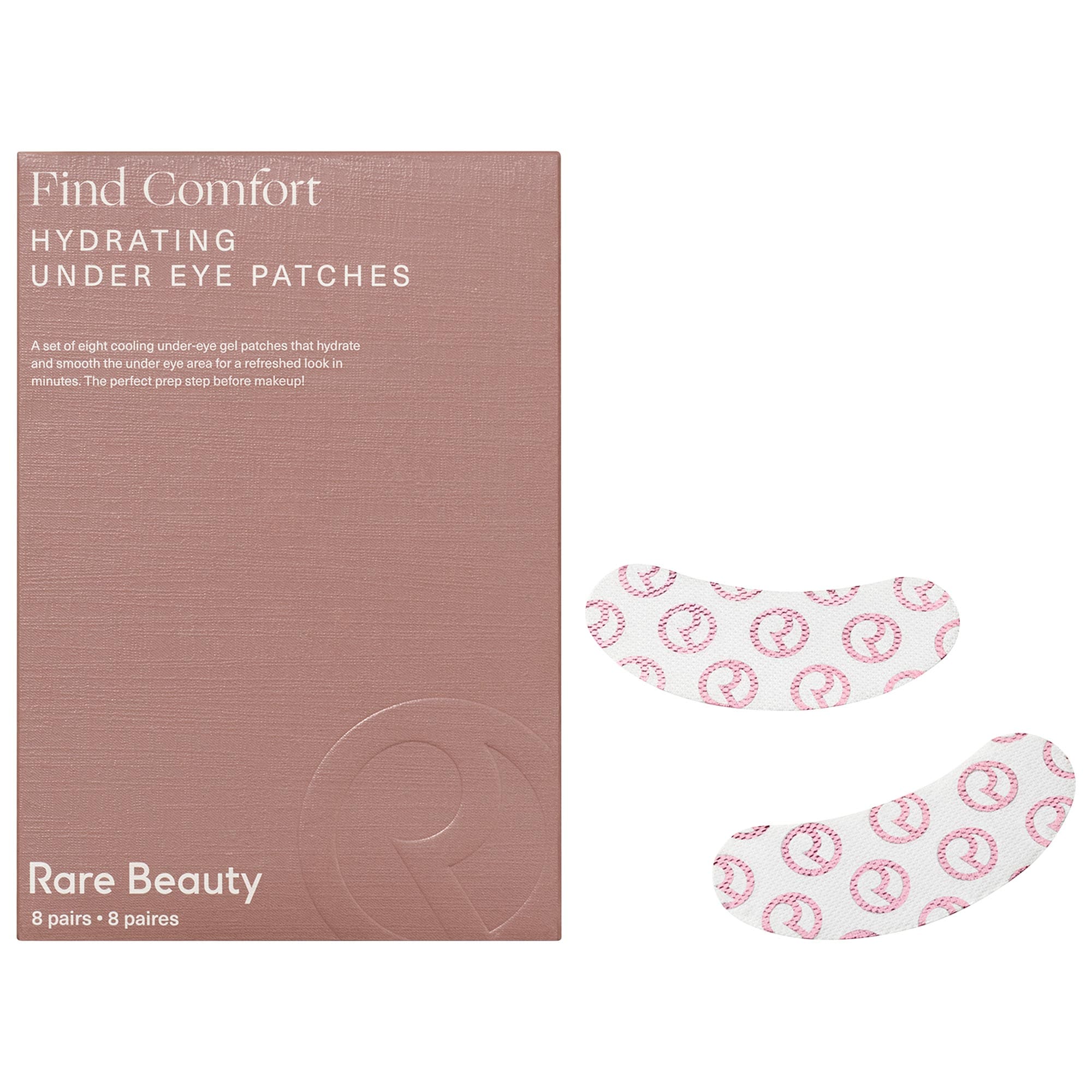
There are tons of celebrities with their own eye creams or under-eye patches, but few are as buzzworthy as Selena Gomez's Find Comfort Hydrating Under Eye Patches from her beloved Rare Beauty line. Gomez gave us exactly what we want in patch form: a non-slip design that checks all the major under-eye boxes. They’re hydrating, soothing, brightening, de-puffing, and firming—all without a steep price tag. Plus, they’re super refreshing to wear, thanks to their cooling aloe vera and no-slip grip that truly stays put.
Key Ingredients: Caffeine (depuffing), green tea extract (soothing), hyaluronic acid (hydrating and plumping), acetyl hexapeptide-8 (smoothing), tartaric acid (exfoliating and brightening)
Pairs per pack: 8
Benefits: Hydrates, plumps, de-puffs smooths, firms, brightens
What We Love: Refreshing cooling effect; stays in place; effective without being expensive
What We Don’t: Only available at Sephora and Rare Beauty (so far)
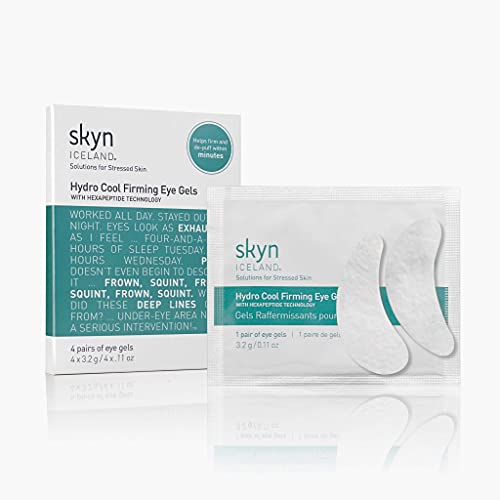
True to their name, these eye gels cool, soothe, and depuff in just 10 minutes (though we say keep them on longer while you sip your morning coffee). They’re perfect for anyone who isn’t a fan of the residue that comes with serum-soaked patches, thanks to their drier texture—without sacrificing effectiveness. Thousands of shoppers swear they deliver visible results, diminishing puffiness, fine lines, and dullness fast. And they're so beloved that many fans say they make the perfect gift for friends in need of a quick under-eye refresh.
Key Ingredients: Glycerin (hydrating), coenzyme Q10 (repairing), acetyl hexapeptide-8 (smoothing), angelica rrchangelica root water (soothing and cooling)
Masks per pack: 4
Benefits: Hydrates, cools, de-puffs, sooths, firms
What We Love: Refreshing cooling sensation; thousands of five-star reviews praising their effectiveness; visible de-puffing, plumping, and brightening results in just 10 minutes
What We Don’t: These under-eye patches are on the drier side; not very moist
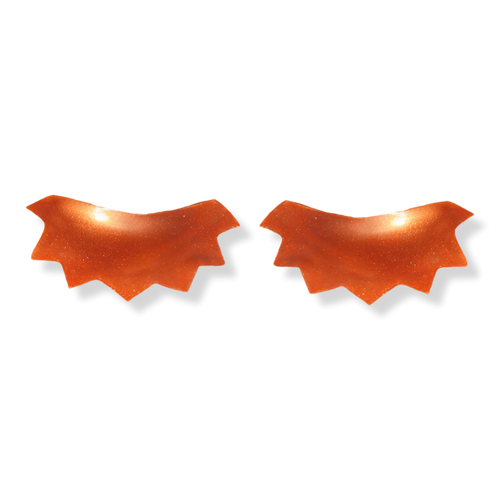
Live Tinted doesn’t mention on its website that its eye masks are biodegradable, unlike retailers like Ulta and Amazon—but they should, for all the beauty-loving, environmentally-conscious shoppers out there. These masks stand out for their distinctive jagged shape, orange hue, and an ingredient list that sets them apart. They're ideal for anyone looking to target signs of aging because they use copper peptides to strengthen, firm, and shield your delicate under-eyes from environmental stressors, banana extract for hydration and brightness, and bakuchiol, a gentle, natural alternative to retinol.
Key Ingredients: Copper peptides (anti-inflammatory), banana extract (depuffs and brightens), bakuchiol (exfoliating)
Pairs per pack: 5
Benefits: Brightens, depuffs, reduces the appearance of fine lines and wrinkles, hydrates
What We Love: Biodegradable; playful shape; unique (yet effective) ingredient list
What We Don’t: Some shoppers feel they're a bit heavy on the packaging
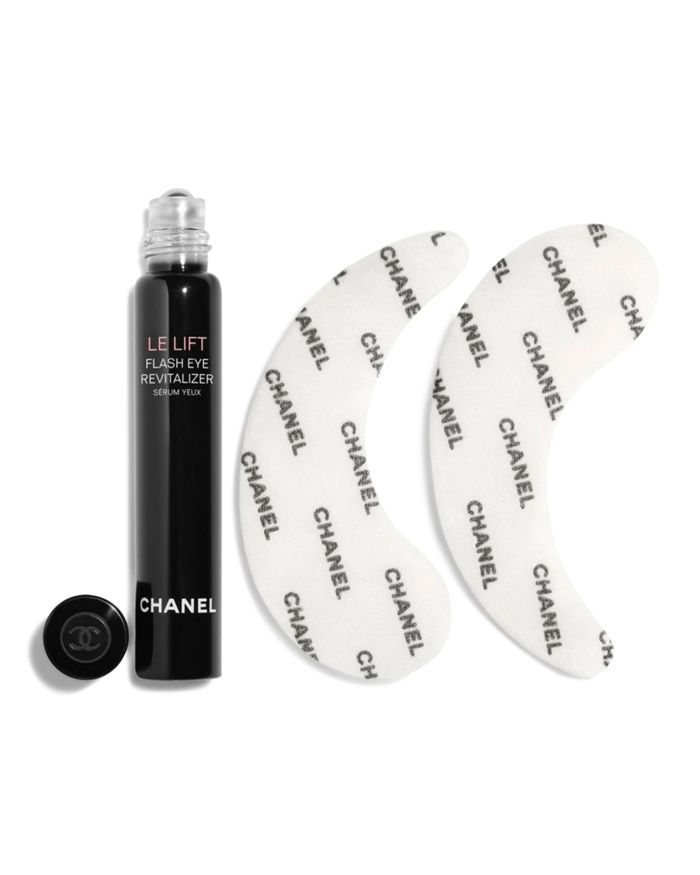
This luxurious Chanel patch serum duo rivals the Dieux one with its two-step approach for optimal results. Chanel’s system includes both essentials: a firming roll-on serum rich in vitamins to brighten dark circles and reduce puffiness and, of course, Chanel-branded under-eye patches. After applying the serum, you put on the hydrogel eye patches—Dr. Collins recommends them for their cooling and depuffing effects—to boost the serum's absorption.
Key Ingredients: Chanel-exclusive ingredient, 3.5-DA (firming)
Pairs per pack: 10
Benefits: Hydrates, reduces puffiness and dark circles, improves firmness, and improves the appearance of dullness
What We Love: Two-step system; luxurious Chanel-branded patches; cooling roller applicator
What We Don’t: The ingredients are somewhat elusive, relying mainly on a proprietary blend
What to Look For in Under-Eye Patches
- Hydrating Ingredients Like Hyaluronic Acid, Jojoba Oil, and Shea Butter
All three dermatologists we spoke to recommended hyaluronic acid to help hydrate the delicate under-eye area while temporarily plumping fine lines and wrinkles. Dr. King also told Marie Claire that another key humectant to look for in under-eye patches and masks is glycerin. Like hyaluronic acid, glycerin attracts and locks in moisture to keep skin hydrated.
Emollients and occlusives are also effective ingredients in under-eye masks to complete the hydration trifecta. "Emollients like jojoba and argan oils and ceramides help to support the skin barrier," while "occlusives help to lock in moisture," says Dr. King.
- De-Puffing Ingredients Like Caffeine
Dr. Collins and Dr. King consider caffeine the "it" ingredient for tackling under-eye puffiness caused by fluid retention, allergies, lack of sleep—you name it. Dr. Collins explains that caffeine is a "vasoconstrictive ingredient," meaning it reduces blood flow in the area where you apply the under-eye mask, helping to decrease redness, swelling, and, of course, puffiness.
- Brightening Ingredients Like Niacinamide and Vitamin C
If you've already checked out our guide to the best under-eye patches, you've likely spotted one of Dr. King's go-to ingredients: niacinamide—a multitasker that tackles dark circles caused by hyperpigmentation. Another heavy-hitter is vitamin C, which brightens up stubborn dark areas. Then there's hyaluronic acid for plumping, plus skin-strengthening retinol and peptides that thicken that delicate under-eye skin and, in turn, make dark circles way less noticeable.
- Fragrance-Free Formulations
"I always look for products formulated without fragrances," Dr. Collins tells us. Fragrances, whether natural or synthetic, can be irritating, especially for those with sensitive skin. (For your convenience, we've noted which of the above under-eye patches contain essential oils or added fragrance.)
What Are the Benefits of Under-Eye Patches?
- Hydration
Hydration does more than just add moisture—it also plumps fine lines and wrinkles and makes applying your makeup easier. Dr. Collins agrees: "Under-eye patches can work great for immediate hydration of the delicate skin surrounding the eye," she says. "This hydration helps to temporarily minimize the appearance of fine lines and can make makeup application smoother and more even."
- De-Puffing
Under-eye patches can also provide temporary de-puffing of the skin around the eyes. Dr. Collins suggests choosing masks made of a gel-like substance called "hydrogel" (most eye masks made of this note it on their product pages), which offers a cooling effect, plus the aforementioned expert de-puffer, caffeine.
- Fine Line and Wrinkle Reduction
Ingredients like hyaluronic acid can temporarily plump fine lines and wrinkles. For more permanent results, however, that's less likely—though not impossible, according to Dr. Collins. "Under-eye patches may or may not help with dark circles or long-term wrinkle control," she explains. "When they do include active ingredients like retinol, they can potentially help with long-term wrinkle reduction, but then again, actives like retinol or peptides are likely overall more effective in leave-on products like overnight moisturizer."
How to Use Under-Eye Patches
The specifics of using under-eye patches depend on which of the 15 formulas above you choose, but the general approach remains the same. "I recommend applying them as part of your getting ready to go out routine after cleansing the skin and before makeup," says Dr. King. As for how often to use them, Dr. Lal advises checking the packaging, though two to three times a week is usually ideal. (Using them daily might be overkill and could lead to local irritation, he warns.)
Timing is ultimately a matter of personal preference, but if you ask Dr. Collins, she'll say, "My favorite use for under-eye patches is as a pre-treatment for the eyes before putting on makeup for a night out, a big presentation, or any other event. I think the immediate gratification effects of hydration and depuffing are perfect in preparation for looking your best. I like to put the eye patch on while I work on my hair, search for an outfit, or do my upper eyelid makeup. Because most results are temporary, under-eye patches are most helpful when used right before you want to look your best."
Meet the Dermatologists
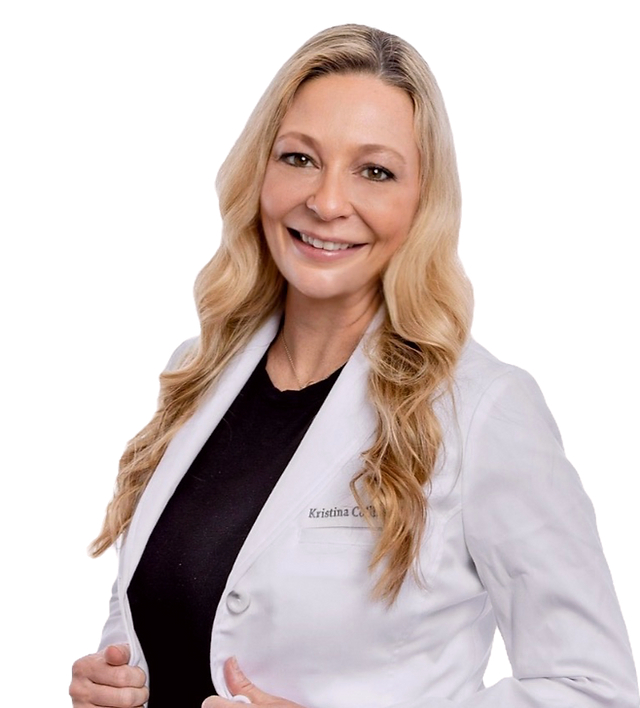
Kristina Collins, MD, is a board-certified dermatologist specializing in Mohs micrographic surgery, as well as surgical and cosmetic dermatology. She graduated Summa cum Laude with dual degrees in Microbiology and Political Science from the Barrett Honors College at Arizona State University. She was awarded the prestigious Canby Robinson Scholarship and earned her M.D. from Vanderbilt University School of Medicine, graduating as valedictorian. She was also named Tennessee Woman in Medicine of the Year for co-founding Shade Tree Family Clinic, a free medical clinic that continues to serve thousands of uninsured patients in Nashville each year.
Dr. Collins completed her dermatology residency through the Harvard Combined Dermatology Program, gaining experience at top hospitals, including Massachusetts General, Brigham and Women's, and Boston Children's. She further honed her expertise with a fellowship in Mohs Micrographic Surgery and Procedural Dermatology at the Lahey Clinic and Harvard Dermatology, specializing in skin cancer treatment, reconstruction, laser surgery, and cosmetic procedures. During her fellowship, she also served as a clinical instructor at both Harvard Department of Dermatology and Tufts University.
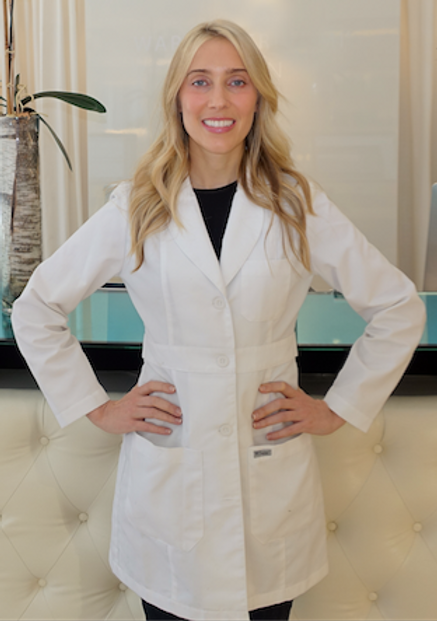
Hadley King, MD is a board-certified dermatologist who specializes in medical and cosmetic dermatology. She is also a Clinical Instructor of Dermatology at the Weill Medical College of Cornell University. Dr. King graduated magna cum laude from Harvard College with a degree in biochemistry. She received her MD from Columbia University. She trained in medicine at Greenwich Hospital, affiliated with the Yale University School of Medicine, and completed her dermatology residency at the Weill Medical College of Cornell University. After residency, Dr. King worked as an attending physician at Memorial Sloan-Kettering Cancer Center, during which time she specialized cutaneous oncology and photodynamic therapy. She also has a background in immunology and her research has been published in a variety of medical journals, including the Journal of the American Medical Association.
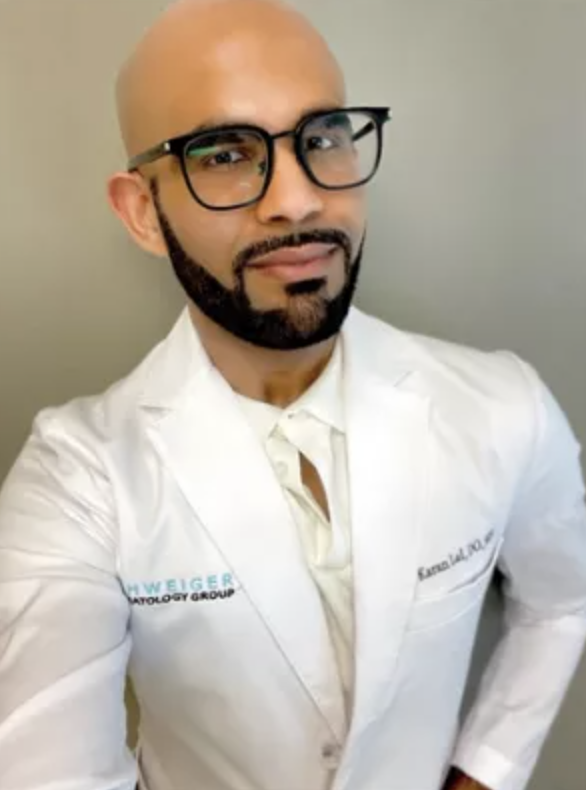
Originally from New York City, Karan Lal, DO, grew up in Queens and attended Hunter Science High School in Manhattan. He graduated summa cum laude from the New York Institute of Technology, where he completed a rigorous seven-year accelerated combined medical program. He was selected to be an academic medical scholar, during which he received a Master of Science in neuroscience and a scholarship for three years of medical school and graduate training. He was elected to the Sigma Sigma Phi and Psi Sigma Alpha medical honor societies. He completed his internal medicine internship at the University of Connecticut Medical Center where he was elected intern of the year. He completed a three-year dermatology residency at the University of Massachusetts, where he was elected chief resident. He continued at the University of Massachusetts to complete a pediatric dermatology fellowship, where he gained an interest in vascular anomalies, pediatric laser, and dermatologic surgery of pediatric patients. Dr. Lal specializes in pediatric and adult dermatology, laser surgery, soft tissue filler augmentation, body sculpting, melanocyte keratinocyte transplant surgery for vitiligo and hypopigmentation, pigmentary abnormalities of the skin and enjoys treating patients from birth onwards. He is an expert in atopic dermatitis, vitiligo, melasma, psoriasis, and hidradenitis and has worked in specialty clinics among experts.
Stay In The Know
Get exclusive access to fashion and beauty trends, hot-off-the-press celebrity news, and more.

Marisa Petrarca is a writer and editor based in Saint Paul, Minnesota, specializing in beauty, wellness, fashion, and lifestyle. She previously served as the Senior Beauty and Fashion Editor at Grazia USA and Beauty and Style Editor at Us Weekly. Her expertise spans breaking beauty news, shopping roundups, product reviews, and explainer articles on popular topics in skin, makeup, and aesthetics. Her work has been featured in PS, Cosmopolitan, Allure, NewBeauty, InStyle, and The Zoe Report, among others. Marisa holds a bachelor's degree in English literature from Wagner College. Follow her on Instagram @Marisa Petrarca.
-
 Of Course, Miley Cyrus Would Pair Her Wolf Cut With Micro Bangs
Of Course, Miley Cyrus Would Pair Her Wolf Cut With Micro BangsAnd pull it off.
By Ariel Baker
-
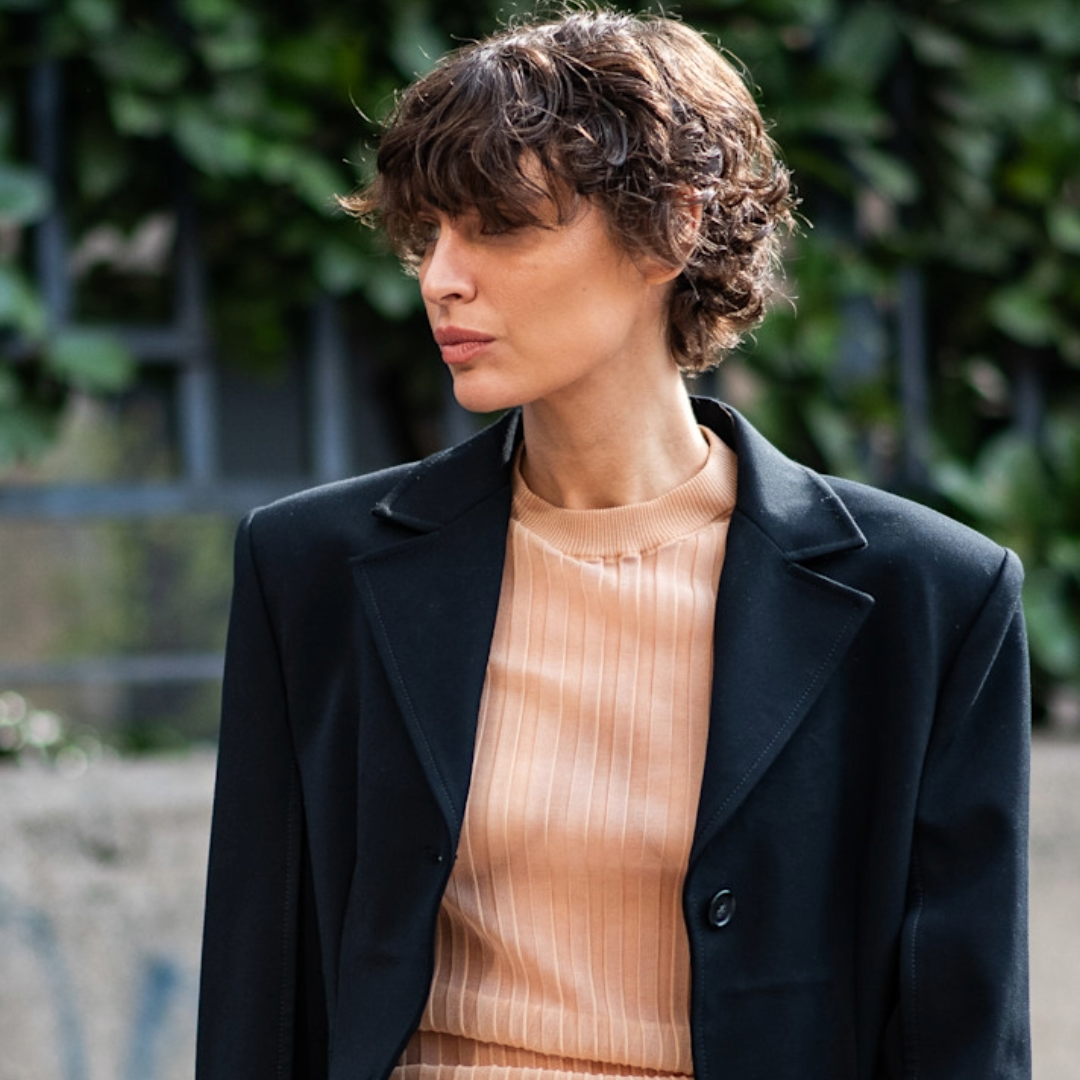 The One Nordstrom Brand I’ve Worn for Years—And What I’m Buying Next
The One Nordstrom Brand I’ve Worn for Years—And What I’m Buying Next22 affordable finds that will convert you.
By Julia Marzovilla
-
 The Queen of Norway Was Air Lifted to Oslo Hospital After "Breathing Difficulties"
The Queen of Norway Was Air Lifted to Oslo Hospital After "Breathing Difficulties"The Norwegian royal has been forced to cancel her duties this week.
By Kristin Contino
-
 Here's the Skinny on Fat Grafting Skincare Treatments
Here's the Skinny on Fat Grafting Skincare TreatmentsHere's the skinny on the cosmetic treatment taking over plastic surgeons' offices from coast-to-coast.
By Fiorella Valdesolo
-
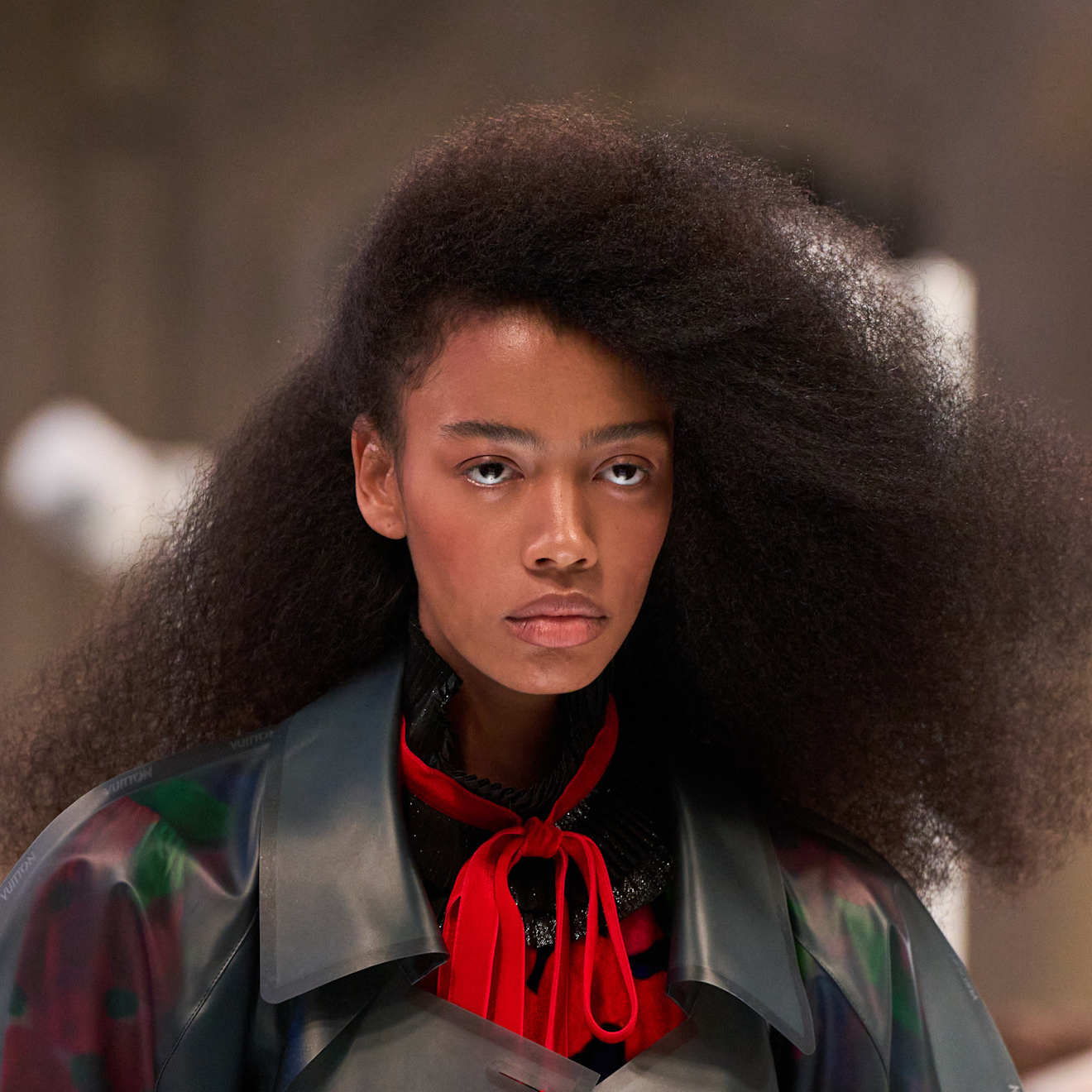 Everything You Need to Know About Marie Claire’s Skin and Hair Awards
Everything You Need to Know About Marie Claire’s Skin and Hair AwardsCould your brand survive an editor testing session?
By Ariel Baker
-
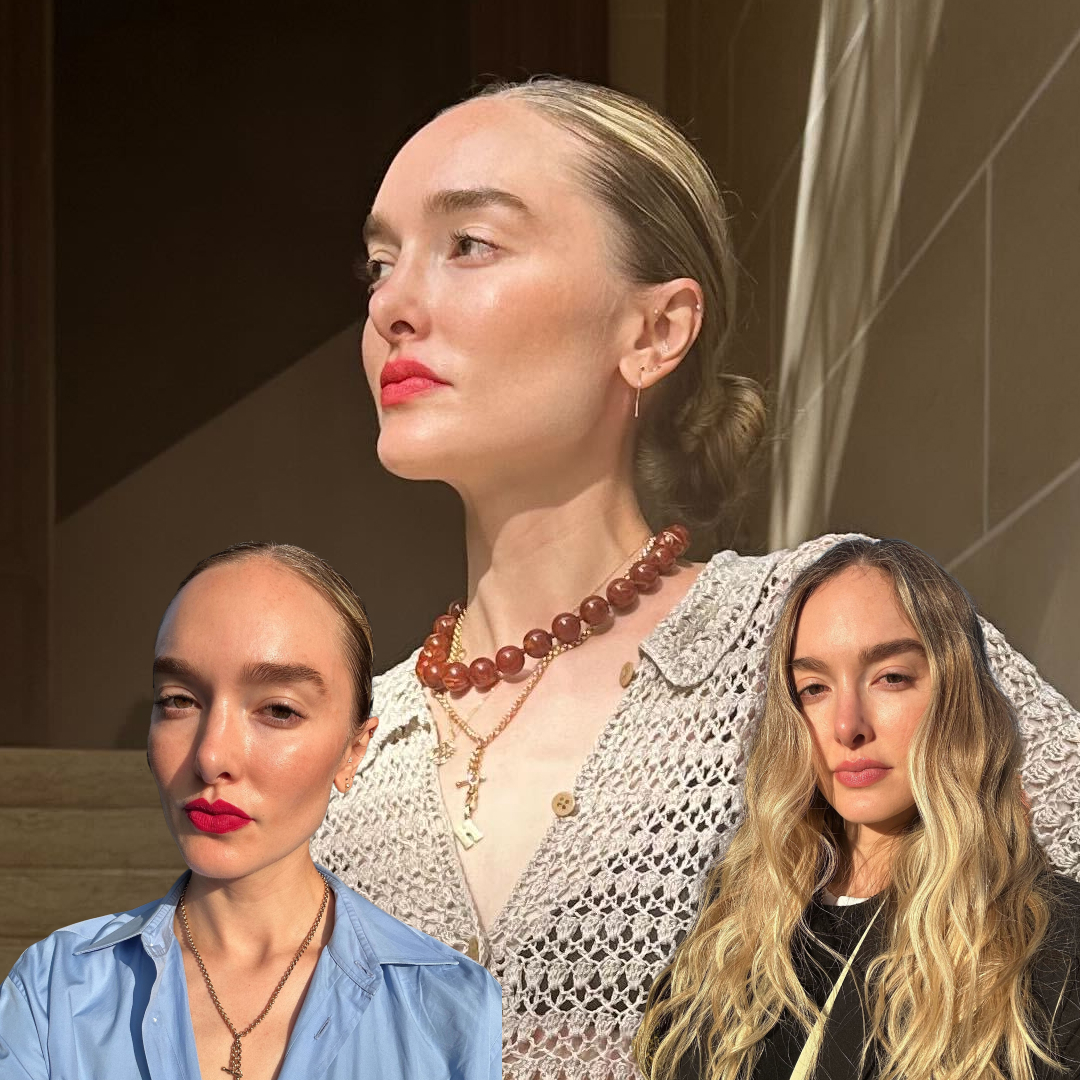 People Always Compliment My Flawless Skin—These 6 Steps Are Why
People Always Compliment My Flawless Skin—These 6 Steps Are WhyFrom sunscreen and essences to moisturizers, it's all here.
By Hannah Baxter
-
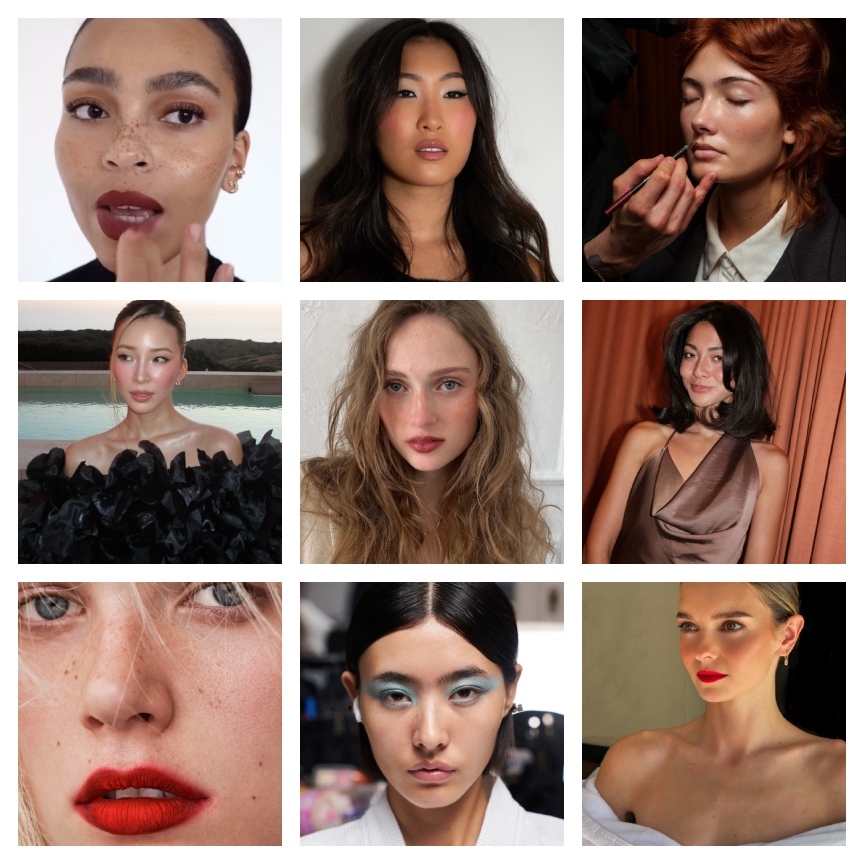 The 11 Best Spring Makeup Trends Are Sexy, Sensual, and Perfectly Luminous
The 11 Best Spring Makeup Trends Are Sexy, Sensual, and Perfectly LuminousIt's dew or die time.
By Jamie Wilson
-
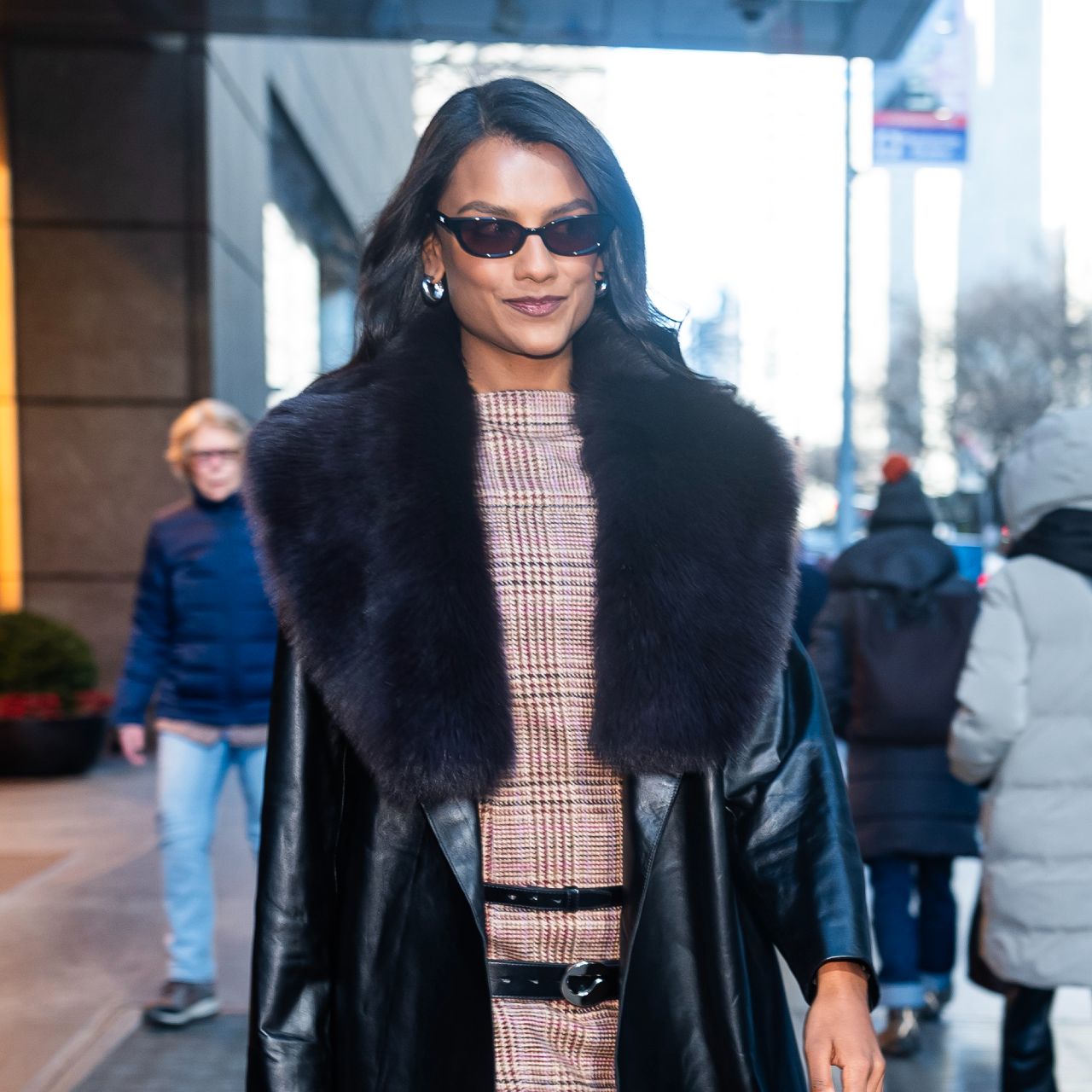 Simone Ashley’s Indie Sleaze Glam Is a Cool-Toned Dream
Simone Ashley’s Indie Sleaze Glam Is a Cool-Toned DreamThe actor was spotted in New York City looking like the epitome of cool-toned beauty.
By Ariel Baker
-
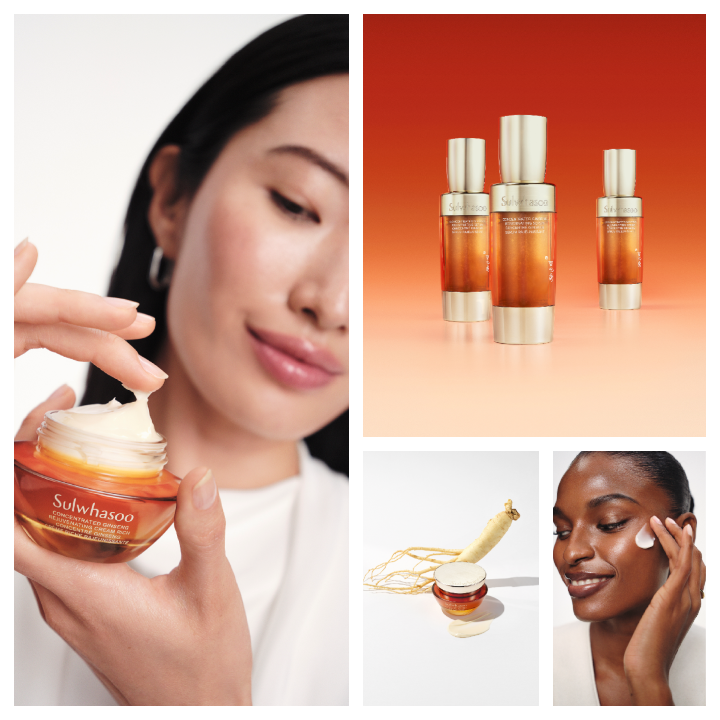 Sulwhasoo’s New Concentrated Ginseng Cream Is a Wrinkle-Erasing Time Machine for My Skin
Sulwhasoo’s New Concentrated Ginseng Cream Is a Wrinkle-Erasing Time Machine for My SkinThis Seoul-based brand is the key to plump skin.
By Samantha Holender
-
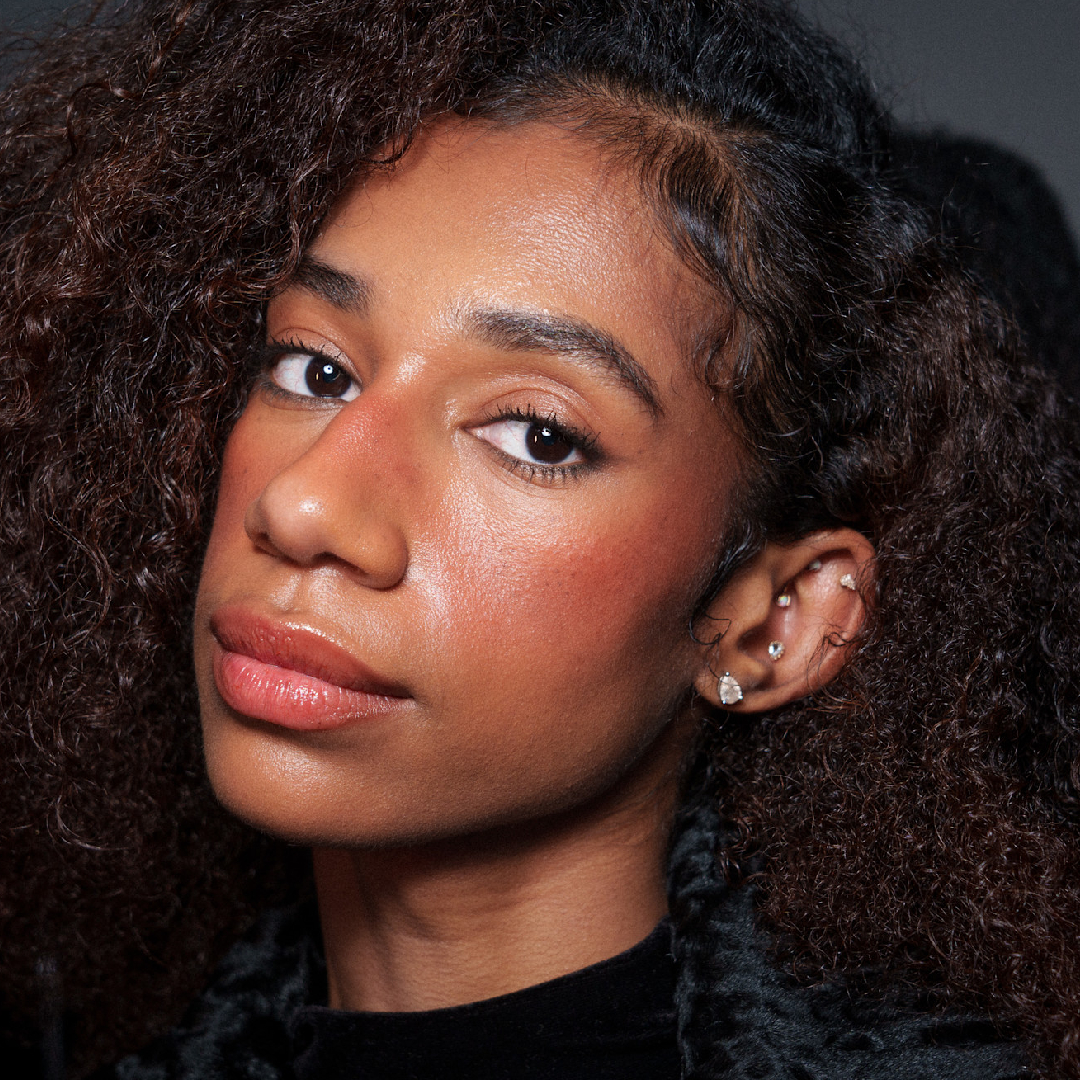 The 10 Best Hair Growth Shampoos of 2025, Tested by Editors
The 10 Best Hair Growth Shampoos of 2025, Tested by EditorsExpensive and healthy-looking hair on lock.
By Marisa Petrarca
-
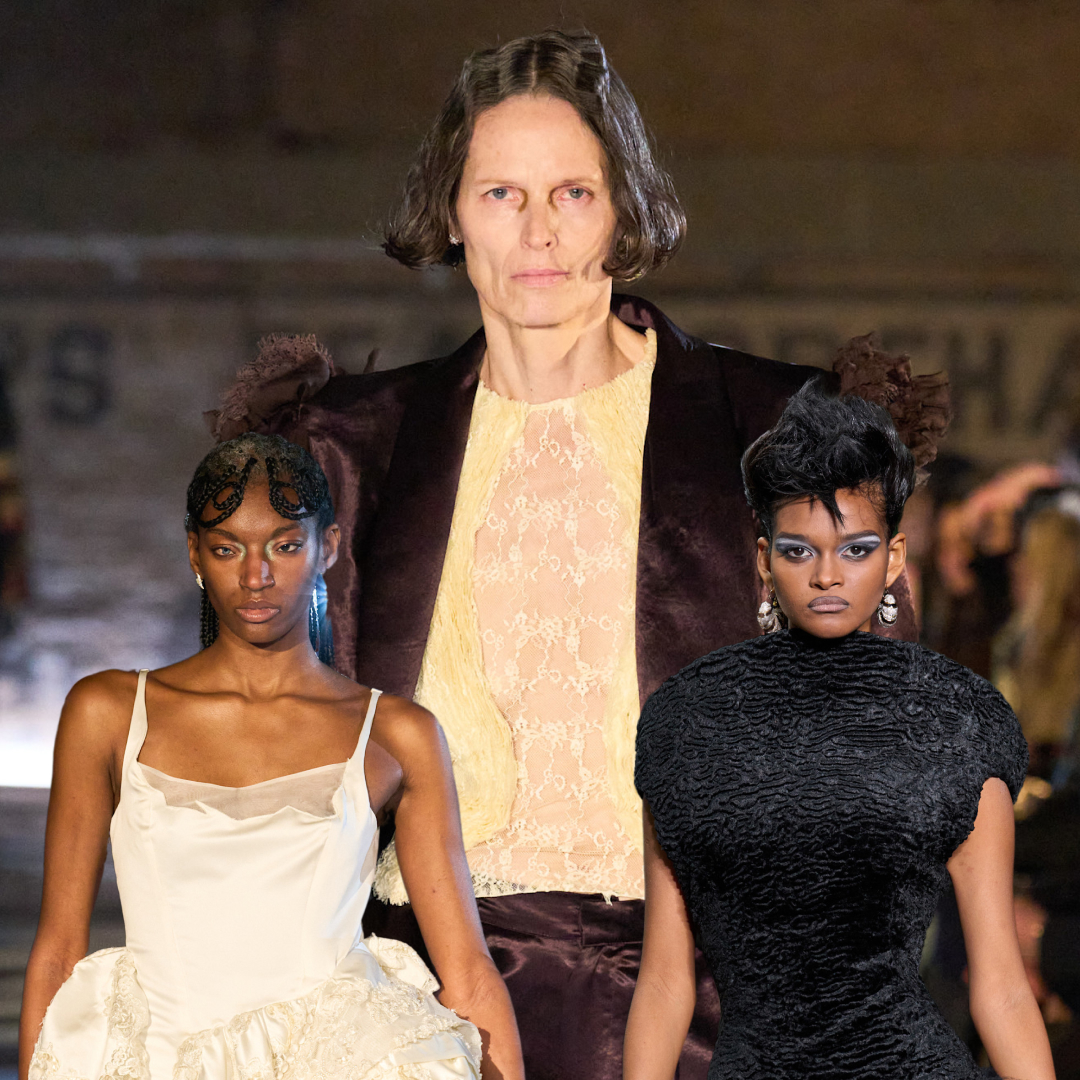 New York Fashion Week’s Fall/Winter 2025 Best Beauty Moments Are a Lesson in Juxtaposition
New York Fashion Week’s Fall/Winter 2025 Best Beauty Moments Are a Lesson in JuxtapositionThe week's best beauty looks were a maximalism master class.
By Ariel Baker